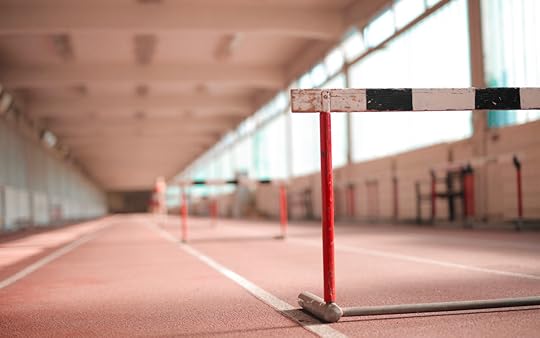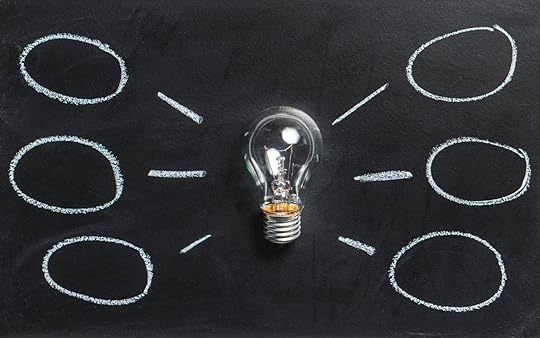Anthony Metivier's Blog, page 17
February 24, 2021
11 Benefits of Critical Thinking That Rapidly Improve Your Life
 Can you guess how many benefits of critical thinking you’ll enjoy along your journey of mental mastery?
Can you guess how many benefits of critical thinking you’ll enjoy along your journey of mental mastery?
The number is huge and here’s why:
The value of learning to think critically compounds over time.
In fact, the more you practice, the more positive outcomes you’ll experience.
So let’s dive into these benefits and point out some tips that you probably haven’t applied before.
The best part?
We’ll exercise our critical thinking skills as we go as I demonstrate a few ways I’ve used critical thinking myself.
Why Is Critical Thinking Important?See what I just did there?
I asked a question to demonstrate the first major benefit.
Asking and knowing why something matters helps you:
Place it in contextLearn about its historyUnpack and analyze its partsFor example, we know that human civilization only really starts going when people started to think.
And that probably only became possible because our ancestors discovered how to irrigate land for farming.
Although human history is obviously more complex than that, it’s also pretty simple: If you don’t have to spend all your time hunting and foraging for food, you can rest and think more.

The more you can rest and think, the more you can think about maximizing your free time, which is ultimately what gave rise to the Internet we’re using to communicate with each other now.
This means that more free time and better communication between people make critical thinking so important.
Why?
Because the better you get at thinking critically, the more free time and better communication you will enjoy.
11 Incredible Benefits Of Critical ThinkingThe following list of the benefits you can expect from thinking more critically are in no particular order of importance.
But that doesn’t mean they can’t be ordered. You can benefit a great deal by thinking through which of these benefits you feel are the most important. Use ordering as a means of practicing your objective reasoning skills.
One: Critical Thinking Gives You Practice In Multiple Disciplines

Want to be able to think faster?
Use “mental rotation.”
When I was in university, and even to this day, I used this critical thinking skill.
Here’s how it works:
Let’s say you are given a problem to solve, such as inner city poverty.
It’s a huge benefit when you can look at the problem from several perspectives, rather than just one. For example, you can mentally rotate through:
Political perspectivesPsychological perspectivesBiological perspectivesEthnographic perspectivesHistorical perspectives Economic perspectivesEthical perspectivesEtc.The critical thinking benefits of “rotating” through these perspectives happen because they exercise your thinking skills. As your perspective grows, you can spot more possible options for the next benefit.

Think of “mental rotation” like a moving windmill of possible mental models you can move through while enjoying the benefits of critical thinking.
Two: Avoid Unnecessary ProblemsThe more perspectives you have, the more models you can mentally navigate. These models (like the ones listed above) help you imagine different outcomes.
Essentially, you enable yourself to create multiple versions of the W.R.A.P. technique taught in the training on ars combinatoria, an early critical thinking tool you might want to explore. It’s just one of several critical thinking strategies you’ll want to learn.
Of course, not all problems are avoidable, and it would not be appropriate to think critical thinking will create some kind of friction free paradise.
But although some decisions will always create new issues, you can seriously reduce the negative impact of those decisions in advance simply by thinking things through with the widest variety of mental tools you can find.
Three: Brain ExerciseYou get brain exercise from critical thinking for a few reasons.
When you shift through multiple perspectives, you’ll be promoting cognitive switching. Research shows that this mental movement is the healthy equivalent of walking for your heart and lungs. Only in this case, the benefits are directed at your brain.

In this case, you’ll be getting even more benefits thanks to how critical thinking gets used in conversations. For example, a fit brain is much more likely to use objective reasoning and avoid the traps of subjective reasoning.
Here are more brain exercises I think you’ll enjoy.
Four: Personal Time ExpandsNow, we’ve talked about how critical thinking was used to help entire societies expand their free time. This works at the individual level too.
For example, if you run an online business and want more free time, nothing will help you faster than applying critical thinking skills to how you can release yourself from certain tasks.
If you’re a student, you can learn techniques like interleaving, just one way of several authentic ways to read faster.
But, if you don’t have critical thinking skills to help cut through the rubbish and pseudoscience out there, you could wind up losing time instead of gaining it.
Five: Communication And Your Use Of Language Improves
Conversations become so much more beneficial when you can use multiple forms of critical thinking in real time.
Like any area of skill, you will learn new vocabulary when you study critical thinking.
New words directly lead to improved language abilities.
Plus, you’ll gain a sense of which kinds of words and phrases to use in which contexts.
Linking thinking with better use of language has always been part of the memory tradition we discuss on this blog. It goes back at least as far as 90 BCE where it was codified in Rhetorica ad Herennium.
https://www.youtube.com/watch?v=X3rts...
Six: Scientific Living Improves Health
When you use your mind well, you’ll be able to make much better decisions related to your health.
For one thing, instead of always taking your doctor’s word for it, you’ll learn to understand the math behind their decisions and decide just how much it applies to you.
This relates to the use of language as well. For example, how many people know that “doctor” is the Latin word for “teacher.”

Using critical thinking can help you correctly assess the roles of people in your life, such as knowing that “doctor” means “teacher.”
If you start to think about your own medical professionals in this light and treat them as the starting point for educating yourself, you’ll probably make much better health decisions.
Plus, when you know word origins like this, an important skill for critical thinkers, you’re able to think faster on your feet.
That is very beneficial for our text major set of benefits:
Seven: Catch Yourself In ConversationsHow many times have you found yourself in a loop of self punishment after saying something you regretted?
According to psychoanalysts like Robert Langs and Robert Haskell, we “encode” unconscious ideas in how we speak.
Now, some critics think these thinkers were reaching after hidden meanings that aren’t there. Although it is true that some of the evidence presented by both is questionable, at least in Langs’ case, he was protecting the identities of his clients.
I feel that Langs has compelling ideas and one of the issues he faces is simply that his theory attempts to account for criticisms leveled at it. As a result, there is a history of people going on the attack rather than having a decent conversation about the topic.

And that’s said because if Langs is even remotely correct, we could all stand to reduce a lot of unnecessary problems from our lives by holding our tongues in advance, rather than feeling badly about the innuendo encoded in our speech later.
Eight: Intellectual Honesty IncreasesI give the Langs example because the contemporary world is filled with bad actors willing to criticize theories or ideas they haven’t fully explored or tried.
That leads to intellectual dishonesty and it harms many people.
But if you’re willing to admit that you haven’t looked at something enough to think critically about it, you do everyone a favor. You also save yourself a huge amount of time and energy because you don’t have to backtrack, watch your back or have part of your brain monitoring the environment for threats created by a lack of integrity.
Nine: Critical Thinking Promotes IndependencePeople who fail to acquire the advantages of critical thinking never experience as much independence as they could.

Obviously, we always want to consult others. That need is never going to go out of fashion.
But there are many situations in life where we simply don’t have the luxury of getting a second opinion. And when that happens, we want to be able to rely upon ourselves.
The problem is… what if you can’t remember how to use the tools of critical thinking?
Don’t worry. I’ve got you covered.
Once you can remember the critical thinking tools and perspectives you’d added to your mental toolkit, you can use the same Memory Palace technique to train yourself to use them almost on autopilot.
Ten: Better CareerWho enjoys the best jobs on the market?
The people who can think on their feet and consistently make great decisions.
Not only that, but they’re able to accomplish other lifestyle goals a lot faster because they have great careers.
Think about it. When you have a great job, you’ll enjoy:
Better salaryGold standard health insuranceRetirement packagesCompany perks like travel expenses and a carNicer offices to work inCloser access to higher level colleaguesThe pleasures of contributing more, etc.Eleven: Everyone Becomes A Better Citizen Of Planet EarthOf course, you don’t have to be (or even want to be) a top level employee or executive manager.

Improved critical thinking benefits everyone. Think of our entire planet as “Team Together” and make sure you bring your best game.
You can enjoy the benefits of contributing to your fellow humans no matter what roles you choose in life.
Merely by learning the importance of critical thinking and applying it in daily life, you will be helping other people.
How Many More Benefits Do You Want?As you can probably tell, there’s a fair amount of crossover between these benefits.
And that means you can expect a lot more than eleven benefits as you practice critical thinking in your daily life.
I know because I taught a fourth year Critical Thinking course for several years as a professor.
I saw many students experience all of the benefits on this page and more.
If I were to sum it up in one word, it would be that they flourished.
This means that they were more than happy. They enjoyed an abundance of positive rewards, and all because they took a bit of time to learn how to think better.
So what do you say? Are you ready to start practicing your thinking skills? Let me know in the comments section and together we can contribute so much to the world.
February 17, 2021
Objective vs. Subjective Reasoning: Everything You Need to Know
 Have you ever made a decision, only to realize you could have been more objective and less emotional?
Have you ever made a decision, only to realize you could have been more objective and less emotional?
It happens to people all the time, and that’s usually because they don’t have decision parameters.
In other words, they don’t have systems of thought that help them use objective reasoning.
That’s important, because it’s definitely not something that happens on autopilot.
This point is also important:
It’s not that subjective reasoning or emotional reasoning is bad. Objective reasoning is not some kind of superhero force of good battling the dark forces of subjectivity.
But without placing our subjective experiences and ideas within the context of as much pure objectivity as possible, we rob ourselves of important opportunity.
What opportunity?
The opportunity to harness the power of context. Moreover, we want to enjoy the fullest possible field of context so that we can successfully weigh all of our options before making critical decisions.
What Is Objective Reason? A Working DefinitionObjective reason goes beyond decision-making and your overall critical thinking strategy skill stack. Being able to reason objectively also helps you understand history, psychology and many other topics much better.
And when you can reason through any topic using multiple layers of reasoning, you’ll remember more as you understand the contexts at play much better.
When defining objectivity, we need to look at standards of thinking. In other words, we want our definition to include:
LogicImpartiality and balancePractical mattersTheoretical mattersTime for deliberationPsychological biases that interfere with objectivity
Objective reasoning involves a balancing act of several elements, including logic, data and awareness of many cognitive biases.
In a phrase, objective reason is a mental thought process that requires logical consideration of a situation or topic that is informed of the possibility for distortion from subjective bias.
For example, people using objective reasoning will be:
Highly self-aware of their mindsAware of a variety of tools for analysisInformed about the role of science and data in making good decisionsWilling to take time for research and deliberationWhat Is Subjective Reasoning?People using subjective reasoning tend to either avoid or not know about the importance of objective tools, theories and the need for scientific data.

Data is a key part of learning to reach reasonable conclusions.
Instead, they rely upon their personal opinions, experiences and tastes. If they think outside of their personal context, they will tend to refer only to other people they know.
For example, they will say, “I don’t know anyone who has had this experience,” and allow that small, personal data set influence their decisions.
By contrast, an objective reasoner will say, “Although I don’t know anyone who has this experience, I’ll do some research to find out what scientific studies exist so I can expand my awareness.”
This form of reasoning is objective because it looks to the external world for information rather than relying solely on the individual’s first-person experience and ideas.
Is Objectivity Even Possible?Good question.
The answer is yes.
However, we need to realize that the tools of science and data appear in the human brain’s of individuals. This creates the fact that each and every person experiences everything subjectively.
This fact does not mean that we as individuals cannot use objective reasoning to access facts that are true regardless of our subjective opinions and experiences.
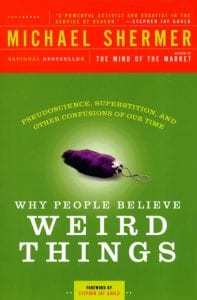 We just need to be aware of the fact that we all experience cognitive biases. In fact, we need them to survive.
We just need to be aware of the fact that we all experience cognitive biases. In fact, we need them to survive.
For example, humans are biased for evolutionary reasons critical to our survival. But in the modern world, researchers like Daniel Khaneman have shown many ways we can avoid some of the traps of subjective reasoning and become objective where it is useful to do so.
In addition to learning about cognitive biases, it is useful to also study game theory books and texts on critical thinking. Why People Believe Weird Things by Michael Shermer is one of my favorite critical thinking books of all time. You Are Not So Smart is a close second.
How To Be Objective In Your DecisionsNow that we have a working definition of objective reasoning, let’s dive into some tips that will help you use objectivity to make better decisions.
I’ll share even more of my favorite books along the way.
One: Keep Learning About The Differences Between Objective and Subjective ReasoningNow that you’re here, the journey has just begun. And it’s very important you keep studying this topic.
Here’s why:
It’s nice to learn about things, but that doesn’t mean you will completely understand them, let alone remember the key points.
To really benefit from developing objectivity in ways that will benefit you for life, find books that will teach you:
The history of reasoningCultural/geographical differences that influence reasoning (like proxemics)Philosophical issuesPsychological issuesDecision making books related to specific topics (business, family, health, etc)It’s a great journey and the more you learn about this topic, the more you can learn about it as your brain makes deeper connections over time.
Two: Practice Objective Reasoning FrequentlyOn top of educating yourself, the key to making objective decisions well is practice.

The great thing about many objective reasoning tools is how they can be deployed almost anywhere.
Practice involves a few components:
The decision to startOngoing analysis of your thought processesLearning to identify and separate your subjective reasoning impulsesCreating distance and delay between your subjective ideas before making decisionsAnalyzing your own subjectivityPerforming needed deliberation and/or researchStress-testing your conclusions by imagining various outcomesMaking the decision and following up with “postmortem” analysisI realize this sounds like a lot of steps, but in many situations, it takes just a short while to go through the process.
In fact, during earlier periods of history, people frequently used a mental tool called ars combinatoria to help them with critical decision making.
Three: Use Writing
Writing is a key tool of reasoning.
They say that the pen is mightier than the sword. It seems to help us think better too.
There are a number of ways to use writing to help you make objective decisions. For example, you can:
List the pros/cons of a decisionCreate a to-do list for people you can consultBrainstorm some research resources to search throughMind map a series of possible outcomes after making a decisionEmail yourself a written version of your thought-processesFour: Discuss Frequently With A Variety Of PeopleMany people say that you are the average of your five closest friends.
I’m sure there’s some truth to this statement, but I wouldn’t rely on it.
Instead, try to have conversations with as many people as you can, of all ages and all stations of life.

Frequent discussion with people from all walks of life stimulates more reasoning abilities.
This is important because you’ll build your pool of perspectives based on lived experience.
And because there will be a large number of positive and negative experiences, you’ll have a stronger “radar” for what might be better for you. Plus, you’ll have a better sense of what kinds of decisions to avoid.
Remember O.T.E. as one of the most powerful resources you can have: Other People’s Experience.
Five: Talk To YourselfEckhart Tolle does a great job of pointing out how we drive ourselves insane with inner dialogue in The Power of Now.
However, that doesn’t mean all dialogue is bad.
Just as writing and speaking with others helps you gain an objective set of perspectives, you can also benefit a great deal by using your inner monologue.

Asking yourself targeted questions leads to better decisions.
I personally like to ask a lot of “if?” questions. For example:
If I make this decision, what will be gained?If I don’t make this decision, what will be lost?You can also ask questions that help determine how you are behaving around a situation. For example:
Am I making this decision in order to win? Am I making this decision in order to avoid a loss?Sometimes when you frame things in this way, you’ll notice that you may well be trying to avoid a loss, only to notice that the loss is quite small compared to what you could gain.
But without asking yourself such questions, you’ll never know.
Six: Schedule Critical Thinking Sessions
Scheduling time for thinking is key to developing your reasoning skills.
If you want to get sharp at using objective reasoning to make better decisions, you need to practice.
Why wait until you’re forced to make a decision to use your skills?
Every day, you have the opportunity to set aside some time to journal and go over the decisions you face now and in the future.
For example, I like to journal frequently during morning walks. I find a bench and spend 20-30 minutes going over the decisions I’ve either already made or need to make in writing.

Using a journal to contextualize my subjective reasoning and arrive at objective conclusions has helped me make many better decisions in life.
There are many ways to journal during these sessions. You can:
Use pros vs cons listsDescribe possible outcomesCreate to-do lists for completing research and due diligence projectsMind mapBrainstormTest motivations and rationalesThe important thing is to create the time and space for deep reflection.
Seven: Create Clarity Around Your Motives and IntentionsWe’ve all heard the advice that you need to “know your why.”
However, this statement is a bit misleading and will potentially weaken you.

Is “knowing your why” as important as people make it out to be?
Here’s what I mean:
Is just one “why” really enough?
If you’re making any kind of serious decision, you probably want to have at least five reasons why you’re doing something.
Not only that, but try this alternative reasoning exercise:
List out at least as many reasons “why not.” By completing this step, you create a set of counterarguments that can help you avoid decisions that may prove destructive.
Another way to get great clarity around decisions in an objective way is to use the W.R.A.P. model taught in Decisive by Chip and Dan Heath:
Widen Your OptionsReality testAttain distancePrepare to fail
The W.R.A.P. formula is easily remembered and incredibly powerful for elevated decision-making.
This easily remembered formula is very useful for avoiding errors and generating reliable ideas and possible paths to solutions you likely wouldn’t find in any other way.
Eight: Create BenchmarksOnce you have your “why” in order and have applied W.R.A.P. it’s important to set benchmarks.
These are specific milestones on the way towards your goal. They matter because many goals take a long time to reach and need to be broken down into smaller tasks.
Benchmarks also help you make decisions along the way, so it’s useful to schedule in regular periods of review so you can pivot or augment a certain process when and where needed.
Nine: Create Metrics For MeasurementAs you make decisions and execute on them, you’ll want to have a means of knowing whether or not you were successful.
It’s often said that you can’t manage what you don’t measure, but I think we need to go a step further.
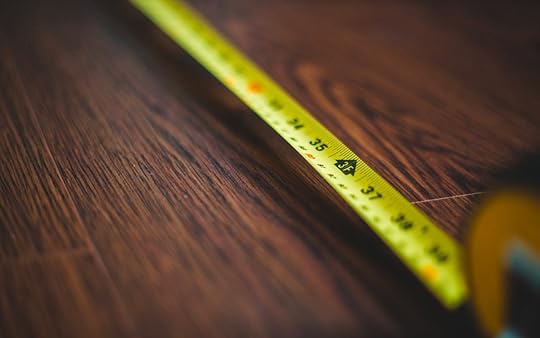
It’s important to measure results in order to reveal clues for attaining more progress in the future.
We need to become aware of the benefits and potential cons of measurement. For example, we can wind up getting so involved in gathering and analyzing data that we wind up in collector’s fallacy.
So as useful as metrics certainly are for testing the validity of the decisions we’ve made, it’s important to cultivate and maintain an awareness of the potential traps in data. This is one of the core points of The Tyranny of Metrics, which anyone interested in objective thinking would do well to read.
Ten: Explore Other Kinds Of Objective ThinkingIn addition to the W.R.A.P. formula, referring to other thinking models is one of my favorite things to do.
For example, the Triz principles have many useful processes that can get you thinking in multiple ways.
Although something like Triz applies to design and engineering, it will still be beneficial. Thinking through such principles, you expand your perspective and can look at your area of expertise with greater objectivity through another lens.
Eleven: Revisit Your Assumptions Frequently

Again, objectivity is something that you experience from within your subjective mind.
This means that no matter how objective you may think you’ve become, your objectivity can still go stale or become corrupted.
One great way to ensure you keep sharp is to develop a regular rereading strategy.
We also change as we age, so it only makes sense to revisit our thinking, ideally by going through the same sources that formed our thought processes in the first place..
Plus, the world is always transforming too.
How To Remember The Steps Involved In Objective ReasoningNow, you might have noticed the nuance involved in developing reasoning skills that will last for life.
But the good news is that you can remember everything quickly.
To do that, I recommend learning the Memory Palace technique.
With it, you can take something like the W.R.A.P. model and rapidly remember everything.
You can also create a mnemonic calendar to help you remember to show up and practice the skills we’ve talked about today, like journaling.
Anyone Can Develop, Maintain And Improve Their Objective ThinkingIdentifying your cognitive biases and learning about logical fallacies are admirable learning projects.
It’s just important to understand that the task is never done.
To be truly objective, you not only need to make sure you nurture yourself with multiple viewpoints and learn to be a solid researcher.
You need to continually revisit the process in order to compensate for change.
Your subjectivity won’t go away either, so it’s important to develop the ability to contextualize it amongst the multiple factors that go into being an individual with a sense of self.
Above all, practice making decisions with these tools frequently. Analyze the results of the decisions and allow the data to help guide future choices you make.
None of this should be a chore. Quite the opposite!
Once you have the steps involved honed into habits, it’s all fun, rewarding and helps you live as a better citizen of planet earth.
It’s a win-win for everyone involved.
February 10, 2021
How to Retain Information Quickly: 11 Surprisingly Powerful Tips
 If you want to know how to retain information quickly, we can boil the process down to one simple term:
If you want to know how to retain information quickly, we can boil the process down to one simple term:
Strategic repetition.
Now, I realize you’ve come to this blog about memory techniques to get rid of repetition.
I’m sorry. That’s not how it works.
We always need to repeat what we want to remember. In fact, why remember something at all if you don’t need to repeat it?
The key differences with strategic repetition vs. rote repetition are these. Strategic repetition is always:
FunCreativeSkills boostingScientifically provenEven if some repetition will always be necessary for learning, it doesn’t have to be painful. And you often won’t have to repeat nearly as much if you get it right.
So if learning how to retain knowledge in ways that are engaging and stimulating strikes you as a good thing, stick around. On this page, we’re taking a deep dive into ways to retain information that you’re going to love.
Why Can’t I Retain Information? The Surprising TruthIt’s not IQ.
It’s not genes.
It’s not laziness.
The reason why most people can’t retain information is that they simply haven’t trained themselves to do it.
We can take it a step further:
People who can’t learn quickly and recall information on demand not only fail to use memory techniques. They haven’t trained their procedural memory so that they use them almost on autopilot.

You cannot “mind read” books. Use proper study and memory improvement techniques instead.
You see, anyone can learn about memory techniques. But without practicing them consistently enough so they become second nature, all that information is just data.
The science here is very simple. We’re basically looking at four kinds of brain processes that you just need to link together:
Encoding information strategically using elaborative encodingDecoding information strategically using active recallSerial positioning with the primacy effect and recency effectsHabit formation so that you start using the strategies automaticallyWe’ll pick up each of these scientific matters in greater detail as we go along. With each tip I’ll share, you’ll discover simple ways to harness the power of each principle.
How to Retain Information Quickly: 11 Proven Tips1: Use Exaggerated AssociationsThe fancy, scientific term for using exaggerated association is “elaborative encoding.”
But you might be wondering… what is an association?
Good question. It’s one of the most powerful mnemonic devices you can use.
Basically, you’re going to look at the target information and find something you can connect to it.
For example, if you need to memorize someone’s name, you’ll look at the first couple of letters. When I met someone with the complex name Gangador Dianand, I just thought about a “gang” first.
Next, I associated that sound with a rap band known to dress as gang members. Then I had them bang on a door.

Using a rap band as a mnemonic device while studying helps you retain information in a fun and engaging way.
That’s the association part. The elaborative encoding part is when you imagine those gang members larger than life and hear the sound of that banging extremely loud. (In your imagination, of course.)
It’s this process of exaggerating the association that makes it so memorable. And that’s what helps with the next tip.
2: Use a Memory PalaceWhen you want to retain info, you need to revisit it.
And after exaggerating an association, the best way to rapidly remember something is to know where you stored it in your memory.
Enter the Memory Palace.
This special mnemonic device is just a mental recreation of a building you’re familiar with and can easily bring to mind.
Here’s an example:
Let’s say you need to memorize some details on a map. If you use Natalie Portman and Art Spiegelman to memorize that Spain and Portugal share a border.
First, you exaggerate an interaction between them. Then you place that association in a room.

Later, to practice what memory neuroscientists like Boris Konrad call “active recall,” you revisit that area in the room and simply ask yourself:
What was happening there?
If you’ve made the association exaggerated enough, your two characters should come to mind and the letters in their names should trigger the target information.
3: Test Yourself StrategicallyIn order to properly benefit from active recall, it’s important that you test yourself.
Unfortunately, a lot of people cheat. They try recalling the information for a second or two, and then give up, exposing themselves to the answer.
That’s called rote repetition. It’s painful, boring and rarely helps with retaining information. You want to use the best possible mnemonic strategies instead.
However, if you have a journal or piece of paper in front of you and the target information is nowhere in sight, cheating is impossible.
Then, when you write out what you memorized using exaggerated association, you get the benefits of active recall.
Even if you make mistakes, you’ll still train your memory to work better. Over time, you’ll get stronger and stronger.

A lot of people “force” themselves to get through one book at a time.
I have a PhD, two MAs and a BA and I can tell you this:
I never do this.
Instead, I take many breaks while reading or taking courses and strategically “interleave” my study material.
This term means that you take breaks often and switch things up. By reading more than one book at a time, you switch from a focused state to the “diffuse mode,” which gives your brain space to remember more.
The research on this goes back at least as far as Karl Duncker who wrote a book about the psychology of productive thinking back in 1935.
More recently, Barbara Oakley has featured contemporary data that substantiates these findings in her famous course, Learning How to Learn.
(Dr. Oakley’s course is also a printed guide and one of the 3 best speed reading books in the world.)
5: Use Proper Reading TechniquesI just mentioned speed reading, but be careful. There’s a lot of garbage you’ll come across in that world.
For example, most of what you’ll read about reducing subvocalization is a farce. Worse, skimming vs scanning strategies are usually poorly understood.

The broad strokes of learning how to read faster boil down to this:
Have goals, missions and systems that help you frame and stick with a focused reading programLearn to use “priming”Extract information strategically (see How to Memorize a Textbook)Use memory techniques to recall the informationMake sure you test yourself using the active recall strategy discussed above (without cheating)6: Improve Your Reading Comprehension SkillsThe first way to understand better is to change your definition of comprehension.
Many people get frustrated and toss their hands up in the air the instant they don’t understand something.
This is an incorrect approach because we read challenging material so that we might understand better. Without challenge, there is no growth.
Instead, learn the best reading comprehension strategies and practice them consistently. For example, I used to look up on charts and grafts and give up on them completely.

By redrawing charts and grafts, you not only improve memory retention, but also comprehension.
Now, I draw them with my own hand to understand them better. This step is essential because not only do I understand them better. I also remember more.
7: Mind MapMind mapping helps you retain information, especially when you revisit your mind maps strategically.
For example, Phil Chambers has given the excellent suggestion that you revisit each mind map at least ten times. Leave a Roman Numeral each time you do so you can remember where you are at in the revisiting sequence.
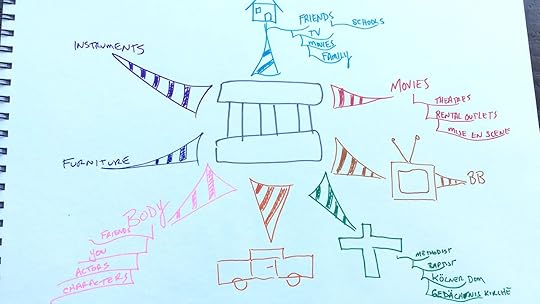
But… what is mind mapping? Put simply, it’s a graphical means of simplifying key ideas using colors, images and keywords.
Let’s say you want to memorize words in a foreign language. A mind map is a great way to do it. I rapidly retained information about cooking in German, for example:
https://www.youtube.com/watch?v=3I7h9...
Here are more mind map examples you can model.
Mind mapping works as one of the best ways to retain information if you optimize it for that purpose. So I suggest using the Phil Chambers tip I just shared to make that happen.

Mind mapping is an incredible wait to retain more information quickly.
8: Write SummariesWe know that we need active recall to remember quicker and with greater longevity. But we also need to percolate information and make connections.
Writing summaries is one of the best ways to do that. And it doesn’t have to take long.
I suggest keeping a notebook just for summaries of your reading. Commit at least half a page for each book you read and pour out what you remembered in at least 2-5 sentences.
With a small amount of practice, this incredibly simple habit will be the portal to remembering a lot more, much faster. And the best part is that it helps with making connections between different books you read as well.
9: Discuss with othersAs with summarization, a great way to practice active recall is to speak with others about what you’re reading.
Frankly, I’m puzzled by why people would read anything they weren’t going to have conversations about. But it happens.
If you’re having trouble remembering what you read, join discussion forums. Go to meetup groups. Or just run past the ideas from what you’re reading with friends.

Frequent discussion is key if you want to absorb more information and maintain it in your memory.
If you really can’t find others to converse with, speak the key points out loud, either to a pet or to yourself in the shower. The point is to verbalize what you’ve read in your own words. This helps you remember much faster and without a ton of repetition.
10: Meditate Your Way To Better MemoryIt might seem like meditating is far flung from improving your memory.
However, many studies show just how profound meditation is for concentration and focus. Others show how people of many different ages experience improved recall from just four short meditation sessions per week.
Add yoga to the mix for more scientific proof that these traditions prove the best way to retain information without having to learn a bunch of memory techniques.
11: Study Your Personal Rhythms To Maximize ThemI know a guy who used to beat himself up for not being a morning person.
In When: The Scientific Secrets of Perfect Timing, Daniel Pink reveals the conclusions from over 700 studies.
It turns out that only 15% of the population performs well during the morning.

Finding your best time of day is highly personal. Explore with a spirit of experimentation.
This means that a huge percentage of people would learn better at different times of day, including later in the evening. In fact, some people remember far more when they study before bed.
How do you find out?
Experiment and track your results.
If you’re willing to keep a journal for a few weeks, you can work out your optimal times for learning and choose them.
Of course, there’s a catch. (Isn’t there always?)
Your best times of day can and probably will change as you age or as factors around you evolve.
This means you’ll want to keep testing and journaling while being willing to pivot throughout your life.
The Ultimate Tip For Retaining InformationAnother word for the willingness to pivot is “flexibility.”

Flexibility is the key to improving memory retention.
When you combine all the tips I’ve shared with you today, your memory is going to be incredibly flexible. And it will always trend towards higher and higher levels of improvement, even as you age.
Since most of us want to be lifelong learners, this should be an issue.
Keep practicing the approaches I’ve shared on this page. The more you explore, the more you’ll discover even more interesting and powerful ways to make learning easier and fun.
After all, the more you can remember, the more interesting and fun things become. And the more you learn, the more you can learn. That’s thanks to the power of connection, which is truly the most rewarding memory technique we’ve got.
So what do you say? Are you excited to get out there and learn more using enhanced memory abilities?
February 2, 2021
How to Think Faster And Avoid 9 Mistakes You Don’t Know You’re Making
 When someone asks you a question, how long does it take to come up with an answer?
When someone asks you a question, how long does it take to come up with an answer?
Depending on the situation, your answer might range from “pretty fast” to “way too long!” If you’re like many of my readers, you would like to learn how to think faster.
Today, we’ll stress test the idea of thinking faster with good old Ulysses Everett McGill from the Coen brothers movie O Brother, Where Art Thou? — otherwise known as Dapper Dan.
Dapper Dan thinks he’s sharp. Thinks on his feet. Gets him and his fellow escaped convicts out of trouble… right?
Not so fast! As much as Dapper Dan might believe himself to be a quick thinker, he’s just not as smart as he thinks. Or as smart as he wants everyone else to believe.
Here’s one of the big problems with the desire to think faster: a lot of people want to have faster thinking because they’re concerned about how they look to others. They’re not so worried about accuracy of thinking — they just want to “think fast.”
So instead of going down the Dapper Dan road of quick (but mistaken) thinking, let’s look at how to process information faster AND more accurately.
Here’s what this post will cover:
Why Do You Want to Think Faster?WRAP Your Way to Faster Thinking9 Factors That Slow ThinkingThink Fast! 4 Ways to Improve Your SpeedQuestions to Ask for Faster Thinking9 Tips to Help You Think FasterBook RecommendationsHow to Be a Quick ThinkerReady to learn how to think faster? Let’s get started.
One of the very first questions you should ask yourself is, “Why?”

Knowing your “why” is important, as is knowing your “why not.”
Are you interested in accuracy, or are you motivated by the Dapper Dan approach? The problem with the latter is that it tends to lead you into trouble.
Even if you know the movie O Brother Where Art Thou? you might not know it’s an adaptation of The Odyssey. Looking back at the ancient Greek epic poem, you’ll notice that Ulysses wasn’t that intelligent of a fellow, but boy could he talk the talk.
Ulysses seduced people into thinking he was a lot smarter than he was in reality, and it got him into a lot of trouble (including needing to take a trip to the underworld to try to get himself out of trouble).
One of the important things we learn from The Odyssey is how to make better decisions by not being like Ulysses. We learn how not to “Dapper Dan” our way to bliss and pretend we’re smart.
Instead, we can learn how to think faster in a legitimate way.
So after you decide whether you want speed (Dapper Dan and Ulysses) or accuracy (the Magnetic Memory approach), list out why you want to think faster.
Do you want to look better to others? Or do you have tangible performance needs, like:
Time limits on your examsHigh demands of your sports teamA decision-based professionRather than worrying about what someone else thinks about the grades you get, focus more on getting good grades later on. A good grade’s function is to qualify for more opportunities to study for additional qualifications (if that’s what you want).
It’s the opportunity to learn more and become progressively smarter over time.
Let’s quickly look at our other examples. If you’re able to think fast on the field, you perform better. And if you’re in a decision-based profession – like a doctor or lawyer – you want to be able to think faster on your feet and think accurately.
The vital part is combining and following those avenues of connection to create stable landing pads in the future. It’s not about the speed — it’s about the landing and how hard or soft it is based on the integrity of the thoughts you’ve compiled along the way.
Now you know why you want to think faster, let’s take a look at a model of decision-making that can help you get there.
Rather than the Dapper Dan approach to thinking, I prefer to think slower, more thoroughly, and W.R.A.P.

But what does W.R.A.P. mean? Earlier this year, I read the book Decisive by Chip and Dan Heath, on Olly Richards’ recommendation.
In Decisive, the authors talk about how to make better decisions, faster and more accurately. In their model, W.R.A.P. stands for:
Widen your optionsReality testAttain distancePrepare to failEver since I read the book, I’ve been using the W.R.A.P. formula for everything I do in my life. I think I’ve been good at a version of that throughout my life, but once I memorized it in one of my memory palaces, I’ve been using it ever since.
Next, let’s look at some of the factors that might be holding you back.
You’ve decided you want to think faster and more accurately. But what if hidden factors are standing in your way?
Let’s break down nine things that might hold you back from quick thinking.
1. Lack of PreparationOne of the factors that slows down thinking is not understanding how to prime.

But what is priming? In a nutshell, it’s a phenomenon where you respond differently to a stimulus based on how you experienced that stimulus previously. The stimuli are often at least conceptually related.
I listened to a presentation by Damien Patterson when he talked about this amazing way he used to pass exams in school. Then he went on to immediately denigrate his approach by saying, “this isn’t the most scholarly way of doing things.”
I went up to him during a break in his presentation and had a quick conversation with him. I told him he should congratulate himself for doing what speed reading experts call priming.
I made him aware that it was a major industry that teaches people how to read faster — and that’s why he got top grades instead of the more diligent students.
Those other students were fumbling around and not using proper learning skills. They didn’t have the thoroughness of accelerated learning techniques to get their studying done right the first time.
When people don’t prepare properly and invest in accelerated learning techniques (like priming), it slows down their ability to learn. And even for the people who do, another factor that slows their thinking – and the value they get out of the material – is that they aren’t thorough about taking the course.
2. An Overflowing CalendarHow many people do you know who schedule time just to think?
The answer is probably none (or not many). But this is one of the essential factors that will help you think faster.
Let me ask another question: have you had your thinking time today?
This is not a hypothetical question. Have you literally checked off the box on your to-do list that says, “Yes, I did my thinking time.”?
If not, this is a problem. If you want to speed up your thinking – really accelerate it – schedule some thinking time.
At the end of the day, if you’re not making time to think, you’re not going to be able to practice it.
3. Substance AbuseMuch like the engine of a vehicle, the human body is not made to run on junk.

Smoking, drinking, and other types of substance use and abuse will severely slow your thinking. By keeping your body clean and efficient, it’s able to use the fuel you give it.
For example, if you drink, you make the liver work harder to process out the alcohol. And if you smoke, it’s like clogging up the air filters in your car’s engine.
Instead, keep your machine running clean.
4. Mental and Physical InjuriesSimilarly, other kinds of injuries also impact your ability to think faster.
Back at the beginning of 2020, I hurt my shoulder. It took me a while to get back to the gym, and while I was working through the injury it impacted my thinking speed.
Harvard Health shared findings showing that “moderate-intensity exercise can help improve your thinking and memory in just six months.” There are both direct and indirect impacts: physiological changes as well as indirect action on the brain itself.
Both physical injury and brain injury can slow thinking. When I developed bursitis in my shoulder, I noticed a dramatic reduction in my memory capacity. I did a podcast interview and made a mistake in one of my memory demonstrations.
Now, this might not seem like a big deal to some of you, but I very rarely make mistakes when it comes to memory. I’m sure it came from the injury because I was very slow and foggy at the time.
Once I could get through physical therapy and get back to the gym, I felt so much sharper. It was like night and day.
5. Behavioral Health IssuesDepression is also a significant contributor to delayed thinking.

Many people who suffer from depression report symptoms of “brain fog” as part of their experience. This cognitive dysfunction can mess with your thinking speed and your reaction time, memory, and executive functioning.
But it’s not just depression that can be an issue. Medications can also slow your thinking, as can normal aging.
6. Poor NutritionThink back to the car analogy we used earlier. Proper nutrition is like giving your vehicle the right type of fuel so it can run smoothly.
When you consume too much sugar, dairy, wheat, and other allergens, it’s terrible for your brain and your speed of thinking.
No one diet will work for everyone, so part of your research into how to think faster will involve trying out elimination diets, rotation diets, and just generally experimenting to see what type of foods make you feel (and perform) your best.
I personally cleaned up my dietary act. I got rid of the booze, wheat, sugar, dairy… and my life changed. My brain got so much sharper. So much faster. And my memory improved, too.
I know we can’t make everyone do the same, but I’ll spend the rest of my life trying to convince you why it’s so important.
7. A Lacking LexiconThis one might surprise you: many people can’t think faster because they don’t have a large enough vocabulary.

When I interviewed Jesse Villalobos – a Magnetic Memory student – on my podcast, he basically said he loves that I use big words because it helps with his thinking.
Coming back to the idea of speed reading, there’s new research debunking it. Studies show that the only way to read faster is to have a more extensive vocabulary and significant knowledge of the field.
I dig deeper into the idea in this post about speed reading.
8. An Excess of EdutainmentA lot of people ask me, “Wheres the meat?”
But what does M.E.A.T. mean? Here’s how it breaks down:
MeaninglessEdutainmentAbsurdlyThrivingIt seems to be thriving a lot more on the internet. Instead of aiming to deepen their knowledge on a subject, people think, “Oh, I just want to look for short videos that are all cut up and spread across a couple of hours, so I don’t have to focus or concentrate or engage with the knowledge.”
Don’t be one of those people.
9. Digital AmnesiaI think the kingpin of all of these factors is digital amnesia.

I can’t tell you how often viewers will tell me they wish I made shorter YouTube videos. But if they took a second to look around, there are plenty of shorter videos on the Magnetic Memory Method YouTube channel.
They’re already showing signs of digital amnesia because if they can’t find short videos from me, then there’s something going on with their field of perception. They’re looking on devices that hide half the content.
And this is not how intelligent people go about studying things. You need the largest possible screen so you have the biggest field of perception possible — this is how to eliminate digital amnesia.
The smaller your field of perception, the less room you have for the seeds of detail that grow into knowledge.
Here’s where the Dapper Dan effect comes back in: “I look cool because I have my tiny little device.”
My advice? Get away from the influence of this small device as much as you can. The convenience is killing so many people and ruining their brains. It’s also destroying their ability to see information in context.
It’s Drama Theory 101.
The shorter the content you consume, the more often you have to “turn on the engine.” If you constantly stop and start the engine of content, you end up with cognitive drain.
But what can you do instead? Train yourself to sit and pay attention! Grab your pen and paper, and go through our notetaking training:
https://www.youtube.com/watch?v=U64aw...
One of the biggest challenges we face in our quest to think faster is the accumulation of the nine factors above.
So instead of letting them slow down your thinking, let’s look at what you can do instead.
We’ll get more into how to incorporate the W.R.A.P. approach to faster thinking, but first, let’s tackle an important way to make sure everything you’re learning sticks.
1. Implement ImmediatelyThe first thing to do as you’re learning how to think quicker is to speed up your implementation.

One easy way to do this? Immediately after you read this post, put all of the recommended books into your online cart at your favorite book retailer and hit submit.
Why? Because you’ll follow the speed of implementation rule — every minute that goes by where you don’t take action, it gets less and less likely you ever will.
This will guarantee you never think as fast as you want because you’ll never get to the next stage. Instead, speed of implementation is a principle for thinking faster because it helps you make decisions as quickly as you can.
And my strong recommendation is to only read in physical form, especially books that contain any kind of information of substance.
For example, if you see a recommendation from a reliable source telling you what to do to fix a problem, don’t overthink it. Get your priorities straight, and then follow the advice within 5 minutes of getting it.
Then, when the book arrives, read the whole thing right away.
2. Get S.M.A.R.T.E.R.Earlier in this post, I mentioned my friend Damien Patterson. He believes in L.U.C.K. — which comes from one of his books.
LearnUsingCorrectKnowledgeAnd by using this correct knowledge, we get S.M.A.R.T.E.R.
SeriousMatureAbsolutelyReadyToEmbraceRealityThe reality is, 6-minute video clips are not going to help you think faster. Instead, they train you to think within a small field — and you cannot expect to think faster if you reduce the field in which thinking happens.
You have to expose yourself to longer forms of content to see “thinking out loud” demonstrated and think along with it.
I get frustrated with so-called education “experts” who praise the “snippetization” of content because it gets more people through to the end of courses. But who cares how much content you get through if it’s eroding your ability to think coherently and consistently across time?
In the real world, you need to demonstrate and capitalize on your ability to focus and concentrate.
If not, reality will smack you, and you’ll hit the ground so hard you don’t know what hit you. Your brain is rotting every minute. We’re all dying. It’s just a fact of being alive, and recognizing that fact is part of having good critical thinking strategies. And you can accelerate the death of your brain by constantly exposing it to snippets of content.
Or you can increase your attention span by giving your brain longer content to focus on! You know which of those approaches I recommend.
3. Exercise Your BrainTo accomplish this increased attention span, you need brain exercise.

One way to get brain exercise is by thinking as correctly as possible — to do the best you can in the moment. Do it regularly, frequently, and in a way that my mentor Tony Buzan would.
He says, “follow the rules and the rules will set you free.”
To me, what it means to be free is to study Frequently with Relevant information that improves your life in a spirit of Experimentation and Entertainment.
That’s where memory techniques come in. Practice frequently with relevant information that isn’t compressed and squished into 6-minute snippets. Find longer content that allows you to think out loud — all in the spirit of implementation (and in an entertaining way).
4. Set Aside “Thinking Time”No matter what condition you face – be it trauma to the brain or body – thinking must be practiced.
But we all know how busy life can be. How do you set aside time to think, with all the other things you have going on?
Let’s take a look at a few different approaches.
Digital FastingYou have to actually set time aside, not just think about it or promise to do it. And one great approach for setting aside time to think is to do a digital fast.
There are two kinds of digital fasting:
1. Walkabout Digital Fasting
For this walkabout, you will leave your house with no device whatsoever. Maybe you take a small journal to write in. But the most important thing is to physically separate yourself from technology.
You might go to a cafe or your favorite park. Choose somewhere that you can do nothing but think. You can also choose to bring along a physical book to read during your fast.
You might consider what to think about on your digital fast, or you can allow yourself time to think about other things as well.
The most important thing is to set aside time for U.S.S.R., or Uninterrupted Silent Sustained Reflection.

2. Creating Digital Borders
I used to avoid Instagram completely. But I finally figured out a way to enjoy the platform without getting trapped in it. Here’s how. (You can learn more about this approach in Nir Eyal’s book Indistractable.)
I open Instagram one time per day, or less often. I have a time limit set (there are apps and phone settings that will limit the amount of time you can spend, and I recommend using them) and don’t go beyond it.
I curate my feed so I only see posts about language learning, philosophy from the stoics, and other knowledge-based content.
I go in, I fart around, post what I want to post, and then leave for the day. And the dopamine spike I get from using the platform is more significant than if I was always in there refreshing.
It’s a bigger payoff because I’ve earned it.
This is a weaker form of digital fasting than totally avoiding digital content, but it can help ease you in.
JournalingI love journaling because it’s a fun way to digital fast.
I really like Yanik Silver’s Cosmic Journal. It’s a beautiful art object that involves randomness exercises within a structure.
Rather than getting your dose of randomness from digital sources, you can get it in a way that’s compelling and directs your thoughts in different ways.
And even if you don’t choose a specific guided journaling practice, just spending time with your thoughts and writing them down is also excellent.
Mind MappingAnother technique I highly recommend is Tony Buzan’s Radiant Thinking.
I’m still a student of mind mapping myself, but radiant thinking looks like this:
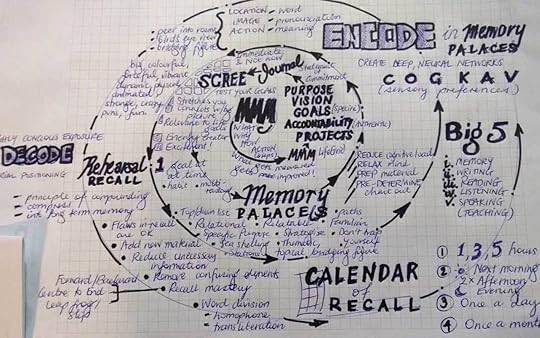
It radiates out of a central image and also radiates internally — and arrows point around from different topics.
Mind mapping is a way to train yourself to think faster, but you need to set time aside to do it. That’s why mind mapping is such a great way to get in your digital fasting time. It’s a win-win.
This past year, I’ve done so much mind mapping that people might think I’m a little weird. I go out with these giant pieces of paper and a big stack of colored pencils. And I don’t care what people think because I’m not Dapper Dan-ing myself.
Instead, I’m focused on just the outcome, not confusing activity with accomplishing. Just focusing purely on how activity leads to accomplishment, and making sure those activities lead to accomplishment.
Feynman TechniqueAnother way to think faster is to learn the Feynman Technique.
This video shows how to apply an advanced version of the technique:
https://www.youtube.com/watch?v=D_JJc...
You need to craft the best possible approach that makes sure your activity leads to accomplishment. You want to avoid the Dapper Dan problem and the confusion of activity-as-achievement.
Now that you have these four ideas in your head let’s look at how you can create a system that helps you ask better questions.
As you get deeper into your quest for learning how to process information faster, you’ll want some heavy-duty techniques.
The following will help you create a little system in your head that enables you to ask better contextual questions.
Contextual AwarenessFrom the time we are young, we’re taught to ask the 5 Ws (and 1 H):
WhoWhatWhereWhenWhyHowAs you learn how to think faster, you should always have these contextual questions in your mind. There’s a little bit more finesse with the “who” part, but some of the others are relatively simple.
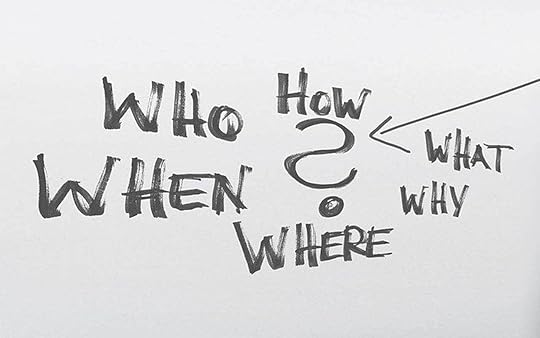
Let’s break down two examples, using “what” and “when.”
What?Ask the following questions:
What is it?When was it created?What is its size?What are its dimensions?What are its parameters?What function does it have?Where was it created?When?We don’t just want to ask “When?” but we want to ask “When” in terms of “What is the actual history by which our understanding of it was built?”
So you don’t want just to say, “Well, they built this particular device in 1812.” Instead, you want to go much deeper — you want to think about the story that tells how we know that history.
For example, let’s take the Industrial Revolution.
First, we need to know when it was generally said to come into existence. But we also need to know what the prevailing tendencies were before its inception that enabled it to thrive? What’s the genealogy?
This would also include the key players. If you want to examine the development of schools, you need to look at education for the previous 100 years.
By incorporating the 5 Ws (and 1 H) as you read, as you have discussions, and as you build up your ability to think faster, the questions will help you finesse out what matters.
This will help you ask the best possible questions to think better and faster. It’s not about the conclusion. It’s about the quality of the questions.
Next, let’s examine the other kind of awareness you want to practice.
Benefit AwarenessThis type of awareness is like “Who?” plus.

When you’re talking about who created something or who said something, ask yourself, “To what benefit?”
Who gets the benefit? Whom does this serve?
As Michel Foucault stated, the definition of power is the ability to conduct the conduct of others. Or, similarly, William S. Burroughs said, very brilliantly, that control seeks to control control.
When you seek the truth, take a moment to check if someone fought long and hard to make that thing true for their benefit. This is a problem amongst scientists because they sometimes base conclusions upon who benefits — but it’s not a problem with science.
Science doesn’t have these problems because science is a tool. It’s the collection of evidence that either confirms or denies a hypothesis. And it helps us make better hypotheses so we can better confirm or deny our ideas about things.
You always want to understand that many people can’t embrace reality because they’re not smart enough yet. This is why it’s vitally important to be S.M.A.R.T.E.R. (Serious Mature and Ready To Embrace Reality).
Benefit awareness will help you cut through the noise and think faster.
And with enough awareness, you can have the best of both worlds. You can have useful philosophical thinking tools and avoid your own cognitive biases.
If you’re stuck in Dapper Dan mode, worried about how people perceive you, then it will be more challenging. But if you’ve got the Dapper Dan problem in check, you’re already ahead of the game.
If you need more help, I put together a special audio presentation called “How to Think” that you should enjoy.
Finally, let’s look at nine different recommendations that will help you with quick thinking.
Before we dive in, a word to the wise: using just one of these tips will help you learn how to be a quick thinker, but you’ll get even more out of this post if you start to combine them.
Which one(s) will you choose?
1. Start a long-term thinking projectThe first tip is to have both a long-term project and a memory vision statement. Not sure how that vision statement should look? Here’s a video that will help:
https://www.youtube.com/watch?v=MFz31...
My current long-term project is to understand Hermeticism and memory tradition. I’ve been reading many books as part of the project, including Frances Yates’ book Giordano Bruno and the Hermetic Tradition.
For your long-term project, I recommend no fewer than 10 or 15 books on a particular subject.
These learning projects help with thinking faster because the bigger your field of vision and understanding is, the more the seeds of knowledge have room to grow.
To take action on this tip, watch the video above, and create your own learning vision statement.

The next tip helps you both think out loud and experience thought in action.
Online discussion groups are okay (especially right now), but when it’s safe again, go and meet other people in the real world. You’ll see thinking out loud demonstrated to you and observe your own thinking out loud in the context of the people hearing you.
Coming back to the idea of the short 6-minute videos, you’ll get a small portion of the organic action (where soundwaves manipulate the physical structures of your inner ear) but it’s just not the same as being together with people.
Sitting together and discussing, picking up interrupted conversations, it’s all part of the extended thinking that you must practice to think faster.
I try to be a part of a discussion group once a week, and I notice that my thinking is sharper and my mind is more vivid when I do. It has a lot to do with the chemicals created when our brains are with other brains.
To take action on this tip, find an in-person or online discussion group around your topic of choice.
3. Meditate every dayMeditation is a great way to think faster, especially if you memorize a text and make it part of your meditation. What text you choose is up to you.
I also meditate in silence, but my preference is to meditate by reciting texts (especially verses in Sanskrit).
This is very powerful because your meditation allows you to concentrate for an extended time and in a way that produces semantic and echoic material. The muscle memory in your mouth is now linked together with the production of thought.
Instead of fighting against ideas, allow them. I spent a decade fighting my thoughts, and then I learned how to sit just to sit — it’s so much better to let the ideas that come up just flow.
I’ll often meditate with a journal or a piece of paper. That way, when a thought arises, I can write it down and then let it go.
And I also find that you get much more focus at the beginning of meditating on a particular text. After a while, a text’s focus power tends to wear out a bit.
To combat this, you can either pick up new material or recite the text in a different order each time. When you rotate your texts, everything gets primacy and recency in the serial positioning and helps them not wear out as fast.
To take action on this tip, choose a single short text to recite during daily meditation.

You want to track your dreams. But why?
You’ll focus on whether you can trigger greater awareness of the present moment by remembering your dreams. When you remember your dreams with more accuracy, depth, and volume, it exercises your memory.
You want to be able to 1) remember your dreams, and then 2) increase the depth, duration, and volume of recall, which triggers lucid wakefulness.
As you begin to practice recalling your dreams in a dedicated manner, you’ll start to realize that the distinction between lucid dreaming and dream recall may be suspect. And you may begin to become more aware of when you’re daydreaming.
Being in a fantasy is being in a fantasy, whether you’re awake or asleep.
But is there a difference between sleep dreaming and wakeful dreaming? The distinction is that our wake-time fantasies tend to be a lot more about the past we think happened, an alternate version of the present, or something about the future.
If you start to track your dreams and associate them with your dreams scientifically, you’ll want to learn proper associative thinking with dreaming. You can also begin to examine your dreams to see if and how anxieties may manifest in your dreams.
To take action on this tip, keep a journal beside your bed and make it a point to write down every dream you remember as soon as you wake up.
5. Incorporate diffusionAnother great way to think faster is just to let things go or let them percolate.
Here are some of my favorite approaches to practicing diffusion:
Go for a walkPractice digital fastingTake cold and hot showersApply your skills in other areasTake a philosophy courseWrite fictionCold showers are a great tool to increase your discipline. And by switching over to using your skills differently, you can give your brain a break. If you write a lot about non-fiction topics, take a break by switching over to fiction. Change up your mode.
In all these cases, thinking speeds up because you’re practicing thinking in different ways.
I highly recommend reading Alex Pang’s book Rest, where some of these ideas came from.
To take action on this tip, pick one of the tasks above and practice diffusion independently.

Another tip for thinking faster is to be aware of your body. Charisma on Command has a great YouTube video about how to think 10x faster under pressure that I suggest you watch.
That video includes one great tip about how to send a signal to your body so things slow down and calm down so you can think.
When a lot of people get stressed, they start to clamp up. But this just causes your brain to get paralyzed — if you can relax instead, it will help you think faster (and better).
To take action on this tip, pay attention the next time you get stressed. Do you get tense? If so, take a deep breath and see if you can relax instead.
7. Avoid analysis paralysisThis post has been a fun way to learn how to think better… think, think, think, think. But there’s a trap we need to learn how to avoid.
You don’t want to get into analysis paralysis. That’s what happens when you overthink something and mentally rotate it one thousand ways and never take action.
So how do you get out of analysis paralysis? The first step is to acknowledge the issue, revisit W.R.A.P., and then segment your decisions.
Have you widened your options too much? Have you reality tested for too long? Have you attained too much distance? Do you need to get closer?
And if you find yourself overthinking your Memory Palaces, here’s a video about how to fix it:
https://www.youtube.com/watch?v=_RJZx...
To take action on this tip, give yourself a deadline to make whatever decision is in front of you.
8. Just get startedThis tip is sometimes easier said than done. But you have more time than you think — because many people treat time incorrectly. They make it a problem when it could be the solution.
You accrete value over time when you practice thinking (and carve out the time to do so). The value comes when you’re consistent.
To take action on this tip, think F.R.E.E. (frequent practice, relevant thoughts, with experimentation and entertainment).
9. Create the Rhizomatic EffectFinally, use memory techniques to create what’s called the Rhizomatic Effect.
Rhizomes are the roots that run deep and interconnect plants of a similar species. Ideas and memories can be thought of in the same way: interconnected and self-replicating.
When you use everything you learned here today, you will end up with aha moments that just happen. “Aha! This connects with that. And that connects with that.”
Do you think you could think faster if you could connect things in your memory? You bet! You want your thinking to be decentralized so it can spontaneously come up with great ideas all the time, from all over the place.
That’s what a good memory palace network can do for you if you use one and fill it with good stuff.
To take action on this tip, start to practice all the information included in this post. There’s no instant formula for success, but with consistent practice, you’ll begin to have those aha moments.

As Magnetic Memory Method readers know, no comprehensive post would be complete without a list of some of my favorite books on the topic.
I’ve mentioned each of the books below in this post. Here’s a bit more about each one and why I recommend them as you learn how to think faster.
Decisive — Chip & Dan HeathI mentioned earlier that this book is where I learned the W.R.A.P. model (Widen your options, Reality test, Attain distance, and Prepare to fail).
This book will help you make better, faster, and more accurate decisions. Remember, it’s a model I’ve used ever since I read the book.
As the authors say, “Decisive offers fresh strategies and practical tools enabling us to make better choices. Because the right decision, at the right moment, can make all the difference.”
Indistractable — Nir EyalIf you would like to know more about controlling your attention and choosing the things that are going on in your life, get yourself a copy of this book.
It’s a quick and fun read, as well as being science-based. It even has a cool device in the back that I highly recommend.
The author asks, “In an age of ever-increasing demands on our attention, how do we get the best from technology without letting it get the best of us?”
I also interviewed Nir for the podcast, where we discussed how to create an indistractable life (and techno-panic-free focus). The interview is a masterclass in how to remove distractions.
Decoding Your Dreams — Robert Langs, MDI spent a lot of time with the author of this book and read a substantial percentage of the books he wrote.
This book talks about dream interpretation in a way that’s not commonly discussed. Rather than a giant index of “what it means when you dream about falling off a cliff,” it gives you a means of testing why you respond to your dreams in the way you do.
This book teaches that, “Dreams — once you learn how to interpret them — are actually an extraordinarily reliable commentary on the way you live your life… you can make sense of the inner truth concealed in your dreams.”
The Victorious Mind — Anthony MetivierI would be remiss not to mention my book that covers how to stay focused. The Victorious Mind helps you learn to free your mind and master your memory.
The book blends detailed step-by-step instructions with scientifically proven practices, including how to craft and use your own Memory Palace to help you think quicker.
If you want to learn how to think faster and dig deeper into what we covered today, this book will set you along your way.
Ready to think faster, today and every day?
With the information you learned today, you can avoid the Dapper Dan trap and think fast (and accurately). Rather than flailing around and using flashy tricks to get yourself out of trouble, you can think on your feet and do what’s best for you and your memory.
You know why you want to think faster, how to avoid the nine factors that slow down your thinking, four ways to improve your thinking speed, as well as the nine tips we just covered.
So what’s next?
Now it’s time to put what you learned into action. You can’t do everything at once, but practice the speed of implementation rule and put at least one thing into use right now.
And if you want to learn more about how to think faster, pick up your copy of The Victorious Mind and permanently kick Dapper Dan mentality to the curb.
January 28, 2021
What Is Ars Combinatoria? A Detailed Example Using A Memory Wheel
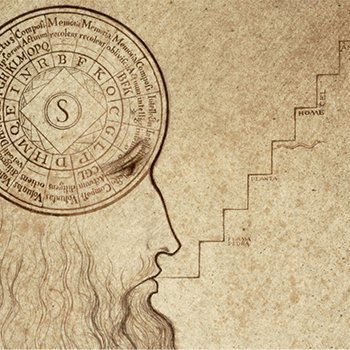 Ars combinatoria is a mental technique that helps with both memory and decision making. The term means the art or technique of combination and is very powerful.
Ars combinatoria is a mental technique that helps with both memory and decision making. The term means the art or technique of combination and is very powerful.
Sometimes called a “thinking machine,” here’s briefly how it works:
You compress larger ideas down into individual letters. These letters are then either referred to purely mentally. Or, as you’ll see, they can be placed on a “memory wheel.”
For example, the letter B might help you compress the word and concept of beneficence. There may be other letters related to B that unpack other large ideas, and the user may need to follow a logical order. Everything depends on the users goals.
To make this technique as clear as possible, including its uses for decision-making, I’ll share a very simple example on this page using a contemporary thought strategy known as W.R.A.P.
https://www.youtube.com/watch?v=0cYDm...
Ars Combinatoria: A Short HistoryThe technique likely originates with Ramon Llull, a philosopher who lived between 1232 and 1316.

Ramon Llull
Its influence is strongly felt and most usefully expounded by the Renaissance memory master, Giordano Bruno.
Note: Sometimes people mistake Bruno’s astronomical diagrams for memory wheels. It’s important to understand that his attempt to help us visualize an infinite universe based on finite solar systems does not necessarily relate to his theories of knowledge and memory.
Although using this critical thinking strategy may involve a “memory wheel,” using one is not strictly necessary. You could also use a traditional Memory Palace.
The point of using such a technique?
Ars combinatoria provides rapid mental access to pre-existing mental content you can use to either follow a process or arrive at optimized conclusions.

Two example memory wheels that use ars combinatoria.
How to Apply The Ars Combinatoria to Your Learning JourneyThe first step is to have a goal.
For example, when Ramon Llull devised the technique, he wanted instant access to information needed to persuade people to adopt Christianity. Since books were heavy and difficult to transport and people are skeptical, it was important to deliver reasonable arguments based on deep familiarity with doctrine.

And Llull didn’t just want this rapid access for himself. He wanted a specific pattern of reasoning to flourish in the minds of many evangelists. That way, his convictions stood a stronger chance of spreading far and wide.
In Giordano Bruno’s case, Bruno adopts some of the ideas from Llullian ars combinatoria, but applies them more to what we might now call “self help” concepts.
Perhaps the best book to read for clarity on this is Bruno’s The Seal of Seals. You can listen these conversations with translator Scott Gosnell for more information:
Scott Gosnell Talks About Giordano Bruno
Scott Gosnell On Giordano Bruno And The Composition Of Images
Other Teaching TraditionsArguably, the arrangement of information into mental memory wheels influenced the development of the textbook. This is a point brought forward by Walter Ong in his study of Petrus Ramus.
You will often see such compressions of information down into different letters in other spiritual and philosophical traditions, such as Advaita Vedanta.
For example, Swami Chinmayanada uses the BMI chart (Body Mind Intellect) to teach how certain mental impressions (vasanas) hold us back from lasting self-realization.

Swami Chinmayanada and the BMI chart show a similar compression of large ideas compressed into a spatial arrangement.
If you watch him teach it, you’ll see that he clearly has it all memorized.
But as Llull imagined people might do, this chart is being used to instruct others towards adopting a particular outcome. The chart allows him to “combine” multiple ideas by extracting meaning from the individual letters as he goes.
Why Ars Combinatoria Is NOT a Memory PalaceAlthough this technique shares characteristics with the Memory Palace technique, it is ultimately very different.
The main reason is simple:
Anything you would place in a Memory Wheel for “combining” or “recombining” would have already been memorized by the user. This is quite a different application of using spatial memory when compared to something like memorizing the planets.
A Memory Palace, on the other hand, is used to memorized the information placed in the wheel. You then use the wheel to access the information in different ways.
We know this is the case because Giordano Bruno teaches the techniques separately and the “Combinator” is designated as a seal, not a Memory Palace in his memory system.
A Modern Example Of Ars Combinatoria Using A Memory Wheel
Let’s make a very simple memory wheel based on a decision making tool Chip and Dan Heath share in their book, Decisive.
We’ll call this memory wheel our Decision Palace. I’ve used what you’re about to learn often, and I hope you’ll consider building one like this for yourself.
Here’s exactly how I built and configured mine to help me make decisions better and rapidly identify the best possible solutions, almost purely from memory.

Imagine a circle broken into fourths. Place the letter W at the top, R to the right, A at the bottom and P to the left.
Unlike the Bruno memory wheels, this WRAP outer ring is simplistic.
However, based on what Bruno describes in Thirty Seals, The Seal of Seals and other works I’ve read, the functioning I’m sharing here is accurate in tone, tenor and outcome when it comes to using a self inquiry to reach decisions based on memorized decision metrics.

To learn more about this decision tool, please check out Decisive, by Dan and Chip Heath.
An Example Memory Wheel
My particular wheel is not merely a mental construct. It is a Memory Palace based on the Anzac Square Memorial in Brisbane.

I could have easily used the circle-like structure of the Bergeron Centre at York University, or “squared this circle” in any number of standard rooms around the world.
Does the memory wheel have to be based on a real location?
Not necessarily, but since spatial memory practice is so beneficial, why not?
If you want multiple memory wheels that feature clear and distinct wormholes or portals to other memory wheels in the manner Bruno suggests, it’s probably beyond most of us to get there without some kind of Memory Palace strategy. But it’s your journey and it’s entirely up to you.
A Modern ScenarioNow, for a practical example of how the outer ring of our WRAP Decision Palace works, let’s introduce a contemporary scenario. Let’s say our robot overlords have made changes to the internet and we have to update our websites.
The new requirements mean a decision must be made to keep things humming, it has to be the best possible decision. Due to all kinds of psychological biases, our brains pressure us to fall back on previous decisions, a problem we’re aware of and know can cause great harm.

That’s why we consistently train our memory to remember to use the Decision Palace. In other words, consistent memory training heightens the self-awareness.
Not only that, but constant practice helps us remember that we don’t know what we don’t know. So to avoid potential bad decisions and make sure we have the best possible ideas to consider, we enter our Decision Palace and proceed to W. This letter opens up and reminds us to widen our options.
The Next CircleNow, before proceeding to the next step, we go from the outer circle to an inner circle which contains 5 more Ws and an H. Who, what, where, when, why and how. Depending on the exact situation, we’ll want to go through each.
Let’s say we better determine what needs to be done, but still haven’t widened are options enough.
So we ask “who” can help. To do this, we step one circle deeper into the Decision Palace, where we find every letter of the alphabet.
Start with A and think of every Internet person we know. We recall Andy, who owns one of the world’s largest yoga websites. He might have some ideas.
B… No one is coming to mind but I think Jonathan mentioned an internet wiz named Bonnie once upon a time.
C… and so on. The deeper into the alphabet you go, the more you’ve widened your options.

When it comes to critical thinking and the contemporary example I’ve shared on this page, the answer is simple:
You no longer need to be worried about limited resources or fall into a scarcity mindset. Your mind already has dozens of ideas for people to ask or even just study their sites to see what they’re up to at the moment and gather ideas.
Then, when we get to R, which in some circumstances could be weeks later, we’ll use either the same 5WH circle, or perhaps another will appear to assist in this stage of the game.
As a word of warning: You could potentially have endless circles inside of circles, so strategy and placing reasonable limits on things will be your friend as you practice.
Of course, neither Llull nor Bruno had any such Internet needs in their time. But I believe everything they placed in their memory wheels were just as practical.
What do you think? Does ars combinatoria seem like a mental technique that might be useful for you?
January 13, 2021
7 Active Reading Strategies That Help You Remember More
 You’ve probably heard that you need active reading strategies in order to understand and remember more.
You’ve probably heard that you need active reading strategies in order to understand and remember more.
The question is… what exactly are these strategies and how can you use them effectively?
On this page, we’re going to cover what I consider to be the best active reading techniques.
According to whom?
First, scientific research.
Second, I’ll share techniques I learned as part of my journey towards getting two MAs, a PhD and working for decades as a research and writer.
So if you like the best of both proven research and lived experience, you’re in the right spot to learn how to read better and faster.
Let’s get started.
What Is Active Reading?Active reading is distinguished from passive reading, an activity where you read just to read.
By contrast, the active reading process involves strategies. These strategies may include:
MindsetMental heuristicsSpecific steps followed in a particular orderAdvanced note taking techniquesUsing memory techniques like the Memory Palace during or shortly after readingThe most important aspect is that you have a specific goal in mind. For example, as I teach in How to Memorize a Textbook, a goal might be to extract and remember three points per chapter.
Here’s another example:
Whereas passive reading might involve just picking up the latest book to hit the market, active reading involves researching books that belong to a specific example.
Some of my personal case studies have involved the Advaita Vedanta research project that led to my TEDxTalk, Two Easily Remembered Questions That Silence Negative Thoughts.
All of the books I read for this project are compiled in the bibliography of The Victorious Mind: How to Master Memory, Meditation and Mental Well-Being.
The success of these projects required reading actively in each of the following ways we’re about to cover in depth.
How to be an Active Reader: 7 Proven Active Reading StrategiesAs you go through each of the following strategies, I suggest you take notes. Why?
Because it is one of the best possible techniques you can do to really switch on the power of fully engaged reading.
One: Active Note Taking

I take notes in a number of ways. These include:
Linear note taking Note taking on index cardsMental note taking using a Memory PalaceMind mappingI have written a lot about many unusual note taking techniques. Two of my favorite include using index cards in different ways.
The first way involves capturing individual ideas on individual cards. I usually decide on how many notes I will take from each chapter to keep things simple and follow the “less is more” principle.
Next, I will make the first card have the title and name of the book. Each card thereafter will feature a quote, key point or my own observations. I always add the page number in case I need to find my way back to the place in the book for context.
The second style involves cramming everything on to just 1-2 index cards per book.
For example, when going through certain books, like some novels I’ve read for a research project on consciousness, there’s no need for multiple index cards. So I use one index card as I read and jot down first the page number and then the quote or idea.
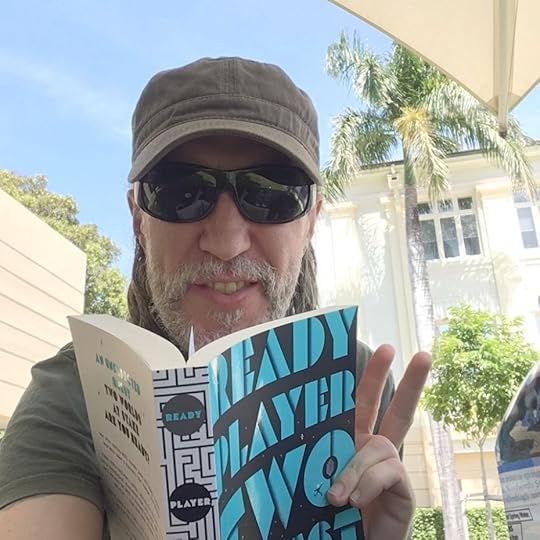
This single card keeps my attention focused on the goal of reading the book. Sure, some of them might be entertaining, but here’s what matters:
Using the index card while reading helps me remember the goal of paying attention to the theme of consciousness – the core reason I’m reading the book in the first place.
Two: Question Everything While ReadingOne thing that puzzles me about people who practice speed reading is their contradictions.
For example, they’ll tell you how to stop subvocalizing, yet at the same time instruct that you should ask questions while reading.
How exactly is this possible? I’m not sure, but I can tell you that I ask questions all the time and vocalize on purpose.
In fact, to make reading extra-active, you can adopt the voice of particular people in your mind. For example, you can pretend that you are Einstein and ask questions in a German accent.
Now that’s what I call active and engaging. And the best part is how it all helps with retaining new information for the long term.
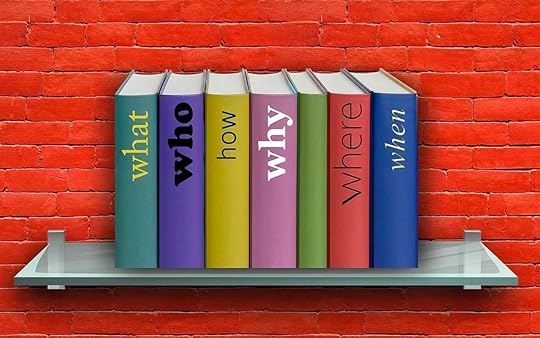
What questions should you ask? The obvious ones, of course:
Who?What?Where?When?Why?How?But you will make your reading even more active by asking other questions.
A first level of additional activity would be to add “else” to each question above:
Who else?What else?Where else?When else?Why else?How else?If you can push for 5 answers in each case, your engagement will go through the roof.
I would suggest you also ask questions like:
According to whom is this true?On what grounds are they an authority?How long is their point valid?What challenges or contradicts their point?Under what circumstances is their claim not true? What other evidence exists that they did not include?

There are potentially hundreds of questions. The more you practice asking both simple and more complex questions, the more powerful questions will come to mind.
Three: Use Multisensory VisualizationA lot of people tell you to visualize while reading.
That’s great advice, but what if you have aphantasia (lack of a mind’s eye)?
The answer, whether you have this condition or not, is to widen your options.
In the Magnetic Memory Method Masterclass, you’ll learn to visualize using multiple senses that we remember through the KAVE COGS formula:
KinestheticAuditoryVisualEmotionalConceptualOlfactoryGustatorySpatial
The Magnetic Modes can be practiced to the point that they work like high-precision cogs in a clock.
Touching on each of these “Magnetic Modes” brings even the most abstract information to life, especially if you’re using mnemonic devices.
Here are some examples of active reading using a few such devices:
You read a book about the presidents and want to memorize one or more names. When you come across “Grover Cleveland,” you think about the kinesthetic sensation of stroking the blue fur of Grover from Sesame Street. You hear the sound of traffic in Cleveland in the United States and visualize the waves by the lighthouse in Cleveland, Australia.You read an equation like 5 ( x – 3 ) = 35. You imagine holding a seahorse in your hand (which looks similar to the number 5). It drives a bulldozer with a scoop shaped like a parenthetical mark. You hear it pushing against a cross in the ground that shoots a bullet at a moustache lying on its side. You estimate that it is about 35 metres high.You read a difficult concept like the halting problem. You imagine Alan Turing “halting” a computer program as it is about to run a speed light. You “hear” their argument in your mind. (Yes, it’s okay to subvocalize while reading.)

There’s no doubt that many people will struggle with some of these active reading activities in the beginning. We often haven’t used any of them since early childhood, and even then, they were neither strategic or as sophisticated as they could have been.
The trick is to just get started. Study more accelerated learning techniques like these as you go. Practice more often and regularly analyze your results.
Four: Pause On New Or Difficult VocabularyAmongst the many bad pieces of advice given in the speed reading community, reading without stopping is amongst the worst.
In reality, the path to reading faster is to increase your vocabulary. That way, you won’t be slowed down in the future. You’ll just know what more words mean.

Here’s a simple routine you can follow when you don’t recognize a word while reading:
Pause and guess at its meaning. What is the work likely to mean?Try to think of alternate words that might fit in the sentence and still make sense.Write the word down on an index card for vocabulary or in a notebook. Jot down the page number and come back to reread the passage later.I suggest that you do not stop to look words up as you go, at least not in an online dictionary.
Doing so interrupts the routine I just shared and also opens you to all kinds of distractions. It’s perfectly fine to save the material for later and doing so improves your memory while fending off digital amnesia.
Five: Draw Difficult To Understand Charts And DiagramsSadly, I used to skip charts and graphs. This bad reading habit slowed my path to understanding and weakened my visual interpretation abilities.
Eventually, I learned that it is worth a bit of time – and is highly engaging – to contend with graphs and charts. And the best tactic for doing so was taught to me by my mentor Tony Buzan.
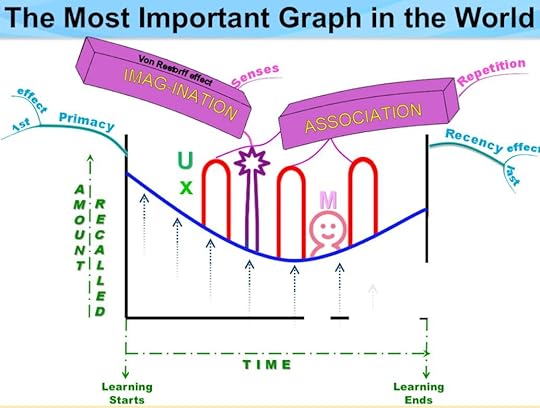

As you can see, I’ve redrawn what Tony Buzan called “The Most Important Graph In The World.”
(He’s right, by the way. This graph explains the science of how to establish long term memory of information in the shortest amount of time.)
If you want a highly active means to understand visual information better, I highly recommend not only drawing graphs and charts. Discuss them verbally with yourself while drawing and later with others. When you teach, you learn the lesson twice.
Six: Revisit Your Reading StrategicallyThe index card method I’ve shared on this page allows you to revisit only the most important information from books in a compact format.
However, sometimes you need to go back and read more. I would suggest that you turn “sometimes” into “almost always.” (Obviously, there are some books where this is not necessary. But even then, it’s worth revisiting them for better memory.)
Unfortunately, there’s no magic number for how many times you should revisit a book to keep your familiarity active. You need to decide this based on your current memory ability and your needs for the information.
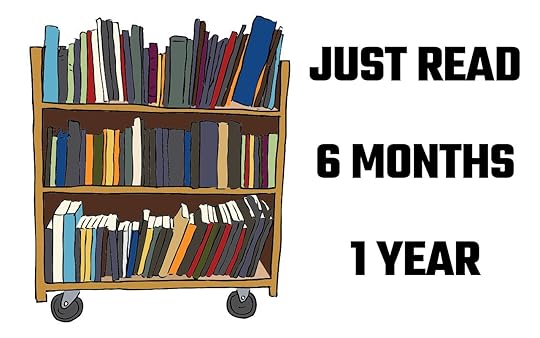
But here’s a fun idea:
Place your books on your bookshelf in three categories:
Just readRead six months agoRead one year agoExperiment with different patterns. For example, you can look through books you’ve read in the “Just read” area five times a week for the first month and then move them down one shelf.
When the book is in the “6 months” area, look at your material once monthly for six months before moving it to the yearly area. Once there, you can look once a year, or start again by putting it at the top.
This powerful variation on the Zettelkasten method helped me a lot during graduate school. Thanks to having index cards in the books, I used Roman numerals to manage the amount of reviews I’d done.

Of course, you’re probably wondering… what if I only read digital books? Audiobooks? Or what if I can only access the books I read at a library?
Good questions. Here’s where using physical index cards will come in handy. You can store these and arrange them according to the needed review patterns in shoe boxes.
This is how I’ve always done it. And I’m not the only one.
In fact, here’s a picture from one many Magnetic Memory Method course participants who do the same. (You can find Mike McCollum’s full success story on our community’s testimonials page.)
If you want to learn more about techniques like this, consider adding the Memory Palace technique. It’s a fun and easy process and it only takes a short amount of time to learn how:
Reading doesn’t end when you close the book. I learned this during graduate school when Dr. Katie Anderson supervised a directing reading course.
In case you’re not familiar with the term, it’s a course where you agree on a reading list with a professor. In lieu of attending a class with others, you meet with the professor and submit papers, usually for publication at the end of the course.
Dr. Anderson wanted more than just a paper from me. She wanted weekly meetings based on full book summaries I’d written.
In the beginning, the process of writing about every book and article I read for the course was a pain. But as my memory of everything I read was incredibly sharp thanks to the exercise, I soon came to love.
The best part? When you’re actively keeping those index cards and using the Magnetic Modes I shared above, writing a summary only takes a few minutes.
To get started:
Read a bookGather notes and any interesting or unfamiliar termsApply the Magnetic ModesCreate a document on your computerWrite the title and author of the book at the topSummarize all the big ideas in the book and any important details and impressionsStore in a meaningful file system for organizationPrint out the summary and wrap it around your index cards for physical storage in a box or something similarOf course, some people are thinking… we’re in the 21st century! Why print this summary out?

Well, when I was in grad school, I remember the very sad story of the grad student who kept everything on his computer. When his machine died, so did all of his research, including the full draft of his thesis.
He ultimately dropped out, because the pain of doing all that work over again was too much.
Sure, you can back things up in the cloud or on a backup drive, but everything digital is subject to decay and disorganization. It’s entirely up to you, but as far as I’m concerned, backing up your summaries in print is itself an active reading strategy worth putting into practice.
Conclusion: The Active Reading Process Pays Off

If you want to remember more of what you read and develop deep and lasting comprehension, these active reading strategies reap many rewards.
The best part?
The more you read strategically, the more strategies you’ll discover. Each person develops their own style, relative to how consistently they practice reading.
And when you do, I hope you’ll come back to this page and share them in the comments.
In the meantime, please let me know:
Which of these strategies appeals to you the most?
January 6, 2021
Skimming vs. Scanning: Which Helps You Remember More?
 If you’re as skeptical about speed reading claims as I am, you’ve probably wondered about skimming vs. scanning.
If you’re as skeptical about speed reading claims as I am, you’ve probably wondered about skimming vs. scanning.
After all, speed readers aren’t the only ones who use these reading techniques. They also aren’t the only ones who have developed energizing strategies that help you remember more by reading less of some books.
The big problem you probably face is that you need to read faster. And you need to do so in a way that doesn’t sacrifice reading comprehension.
I skim and scan books myself, all without any of the highly questionable eye-training and subvocalization nonsense taught in speed reading books and courses. I also read much more on a yearly basis without sacrificing comprehension.
Since I’ve got the academic credentials and publishing credits to my name to demonstrate that I am a reader with legit techniques in my pocket, I’m confident I can help you skim and scan more intelligently.
So stick around because on this page, I’ll share my best tips and skim and scan reading strategies with a particular focus on remembering more. I can only recommend that you don’t skip around – and we’ll talk about why in a second.
But let’s dive in by looking at these techniques from a higher level first.
Skimming vs. Scanning: What’s the Difference?
At first glance, there doesn’t seem to be much that distinguishes these two reading techniques. As you’ll soon see, there are key differences, and their value to you stems from what you’re trying to get out of the reading material in question.Therein lies the ultimate difference:
Reading techniques matter, but they matter most when deployed in context. You need to use the right techniques that work to produce the desired outcome.
And in many cases, neither skimming or scanning will work. For example, if you have no familiarity with the topic area, these techniques won’t help because your brain doesn’t have enough connections to the material.
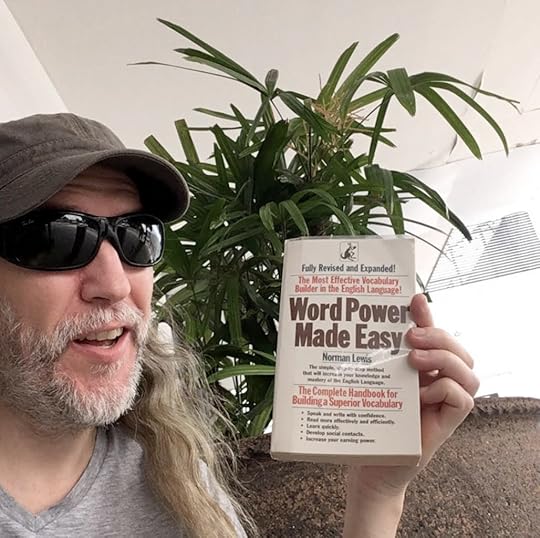
Also, you might not have enough vocabulary to use either of these techniques effectively. This issue usually means that without some preexisting knowledge of a subject area, the differences between these two techniques doesn’t really matter. You will want to start with my free power-training on how to read faster instead.
With this higher level point in mind, let’s get into some definitions that show how and why these techniques differ.
Skimming Defined
If we look at the origin of this word, it literally means to scoop a substance from a surface.
That means when we’re trying to differentiate skimming from scanning, we already know that skimming can never serve as a depth reading technique. It’s all about the shallow elements of a book or other text.
However, shallow does not necessarily mean superficial.
As scholar and narratologist Gerard Genette discussed in his epic book, Paratexts, the “surfaces” of what we read often contain tremendous amounts of detail.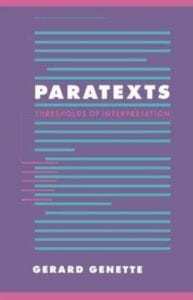
For example, Genette points out the power of reading the colophon page for all kinds of important clues, including:
Date and location of publication
Translation information
Edition number
Author’s biographical data and rights
Now, you might be thinking:
This stuff has nothing to do with the meaning of the book!
That may or may not be true, but it is always a best practice to at least glance at the colophon page. As I discuss in this video, you can pick up a very powerful memory tool:
https://www.youtube.com/watch?v=er-k8Ecgdfo
Other parts of the books you can skim intelligently include:
Table of contents
Index
Bibliography
Acknowledgements
Combined, skimming these elements of a book give you a lot of context. They are worth doing anytime you read any book because they help to form a field of understanding in your mind. And if you use mnemonic devices, you’ll be able to remember more by skimming.

Caption: I dealt with a ton of overwhelm while completing my PhD and a second MA at the same time. Knowing how to balance skimming vs. scanning was a lifesaver!
Scanning Defined
In Brilliant Speed Reading, Phil Chambers says that scanning differs from skimming because it is “less pre-directed.”
I’m not so sure about that, and as we’ve seen, it really comes down to your desired outcomes.
In my view and experience, scanning should include the skimming we just talked about. Scanning might include skimming, but doesn’t necessarily need to include the other strategy.

Scanning definitely involves going deeper. Rather than just familiarizing yourself with the “surface” features, you would go deeper, including:
Flipping through the pages of each chapter
Analyzing any graphs or charts
Looking at images (what learning expert Barbara Oakley calls taking a “picture walk”)
Reading chapter openings and conclusions
Reading the book conclusion
I included some dedicated reading in scanning because scan reading is useless without giving you something to base a decision on.
What decision?
Whether or not you’re going to continue and read the entire book. This decision is one of the best reasons to use both of these techniques because it can save you a ton of time on either:
Skipping books unlikely to serve your goals
Saving books for later that you don’t need to read right now
How To Skim Read
When learning how to skim a book, I suggest you start with the back cover. Try to mentally notice at least three (or more) details or observations that come to mind as you read.
For example, on the back cover of The Victorious Mind: How to Master Memory, Meditation and Mental-Well Being, you might notice a few things like:
The author is a film scholar
Terms like “self-inquiry” and “control-freakism” are used
It talks about the importance of experimentation
The works of Gary Weber are mentioned
An image of a “magnet” accompanies the name of the publishing imprint

By reading the back cover, a “field” of awareness is already developing in your mind.
These observations will compound as you dive into the colophon page, the index, bibliography and other “paratextual” elements of the book.
The most important aspect of this kind of strategy to remember is that you’re reading to develop context. You’re not even sure you’re going to read the entire book yet, but you’re taking every opportunity to make sure you remember more by consciously observing its “surface” details from the beginning.
The Top 10 Scanning Techniques
To scan effectively, you will want to first decide a few things based on what you’ve learned from the skimming exercise.
The main question to ask is this:
Does the book warrant reading further?
If the answer is “yes,” then I suggest you:
Get out an index card.
Write down the name of the book and the author (include publishing date)
Memorize the publishing date using the Major System or Dominic System
Count the number of chapters and then page through the entire book
Note any keywords or key ideas that leap out at you
When you find interesting points, add them to new index cards and include the page number
Note any key graphs or images (you may want to redraw some of them if you find them hard to understand)
Ask questions as you scan
Jot down a summary of what you understood about the book from scanning

When asking questions, you can include the stock questions common to most people who use critical thinking strategies:
Who
What
Where
When
Why
How
But you can also go further. You can ask questions like:
How and why is this author an authority on the book’s topic?
How does the author demonstrate the validity of the research references in the book?
What is the book’s big idea in my own words?
What are a few of the sub-ideas in my own words?
Do I need to read this book in full?
Do I need to start at the beginning or can I select certain chapters?
One of my favorite questions is:
So what?
To put it another way, “if this claim is true, what changes? If it isn’t true, what changes?”
If you find that the answer is… “nothing changes,” then the stakes presented by the book simply aren’t that high. It might be worth skipping the book altogether.
In sum, the quality of the answers you get from these questions will depend on your skills as a skimmer and your general familiarity with the field before you started the skimming and scanning exercises.
Now, if using index cards is not something you care to do, you can use these mind mapping examples to consider some alternatives.
Should You Skim Or Scan?

As you can tell by now, my answer is both. One reading strategy is almost valueless without the other.
Plus, you really need to perform some self-analysis before getting started. If you’re not already familiar with the area, neither of these techniques will be particularly helpful. In fact, they could damage your enthusiasm for learning the topic at all.
If necessary, work on your reading comprehension strategies first so you can gain familiarity with the field.
Everyday Applications For Using The Skimming And Scanning Technique
If you’re in a bookstore, that’s definitely the time to simply scan a book. As a nearly universal rule, when I have found a book that passes the “scan test,” I get it. Too much time is wasted wishing I would have just got something and little is lost by having another reading resource around.

When working in libraries, it definitely makes through to go through both skimming and scanning. To keep my index cards gathered together in a compact manner, I usually put them in ziplock bags.
I know: this process is kind of weird. However, I’ve been practicing it since 2000. The organizational power alone has been invaluable over the years. Plus, I simply remember a lot more along the way about books I’ve seen, even if I haven’t read them all.
For online applications, you can do something similar, taking care to write the web address and the date you accessed the article online. Some people will want to use Evernote, and there are tactics you can learn to optimize all kinds of software programs of this kind.
How To Skim A Book For Use With The Memory Palace Technique
There are a lot of ways to remember more of what you read even if you’re skimming and scanning.
Of course, this assumes that you know how to use a Memory Palace. If you don’t have this skill yet, learn how to use it now:
Once you know how to use a Memory Palace, you have options. For example, you can:
Rapidly memorize the publication date, title and author name of any book
Quickly create images based on page numbers using a 00-99
Use individual pages as simple Memory Palaces
Ultimately, you’ll want to save these techniques for a full read of the books you encounter. And for that I suggest you learn how to memorize a textbook in greater detail next.
How To Choose Your Reading Wisely And Contextually
At the end of the day, the techniques you choose for your reading are less important than what you read and why you’re reading it.

Unfortunately, no one can tell anyone else exactly what to read. That’s why I recommend you deploy these techniques within the context of a vision statement.
For example, I have a long term reading project about NASA and space travel, one that is nested inside a learning project about the relationship between memory techniques and early developments in science and astronomy.
When I found Dr. Richard Wiseman’s Shoot for the Moon in a bookstore, I skimmed it and instantly saw how it fits my reading project. Later I scanned it to maximize my field of understanding and then read it thoroughly from cover to cover for best results.

When you use skimming and scanning techniques in this way, you’ll go beyond the energy-draining tactics that lead to highly suspicious ideas like “photoreading.”
Instead, you’ll have energy-creating strategies that keep your enthusiasm high because you’re legitimately extracting maximum value from each and every book you look at. Without context, all the skim tips in the world won’t do better for you than any other accelerated learning technique.
So let me know, what do you think of these definitions of skimming vs. scanning? And what vision do you have for your reading goals?
December 31, 2020
How to Stop Subvocalizing: My Surprising Solution
 Wondering how to stop subvocalizing?
Wondering how to stop subvocalizing?
Well, let me ask you this:
What if this rather strange term from the world of speed reading is fraudulent? Or what if reducing subvocalization is tactically a false goal for any serious lifelong learner?
Here’s an even better question:
What if there exist strategic ways to use your “inner voice” to read faster?
You’re in luck.
You see, the Magnetic Memory Method stresses the importance of avoiding energy-draining “tactics” so you can focus on enthusiasm-producing strategies that actually help you learn faster and better.
That’s why on this page, we’re going to explore:
How this strange term “subvocalization” has been defined and used historically.
The psychological pain used to exploit people who are desperate to learn (this is probably what allows for the perpetuation of pseudo-scientific fraud in this area).
Real techniques you can use to improve reading comprehension and speed by using your inner voice.
And hey, if after you discover the truth subvocalization you still want to reduce it, I’ve got something for you. I’ll mention a simple trick from the world of meditation that is more likely to get you there.
It’s perfectly a reasonable exercise. And the best part is that it relates scientifically to the nature of consciousness and studies in other aspects of learning where the eyes are involved.
Let’s get started.
What Is Subvocalization?
First of all, there’s a long history to this term, and “subvocalization” isn’t the only word people have used. As Donald L. Cleland and William C. Davies show in “Silent Speech – History and Current Status,” the term also appears as:
Silent speech
Implicit speech
Innervocalization
Lip reading
Vocalization

The first recorded observation of people “speaking silently” to themselves occurred in 1868. Two psychologists focused on human physiology created a device like a telegraph key activated by the tongues of their test subjects. Everything they discovered is premised on the idea that parts of your mouth and throat move while you are reading.
Somehow… for reasons no one seems to know… these movements came to be negatively portrayed as a (gasp!) habit.
What we do know is that people who cite the same research clearly haven’t interpreted it as I have. They clearly missed Ake Edelfelt’s conclusion that subvocalization should not be stopped (more on his research-based assessment below).
Frankly, if my interpretation is correct, and the “speed reader” who says the research calls it a bad habit is correct, then one of us is a horrible reader. Given that no one writing on that site uses a full name or lists any academic credentials… I don’t wish to come across as arrogant, but the bad reader probably isn’t me.
Carrying on…
The Historical Devices That Proved Subvocalization Is Normal
Later devices used to study subvocalization included connecting a pneumograph to a kymograph.
Some of these studies may have been mixed up with research into stuttering, which also involved using a pneumograph.
If you read John Madison’s An Experimental Study of Stuttering, for example, he finds that stutters suffer brain fog and poor concentration. But he also finds that the use of a telegraph key for gathering data related to vocalization is highly suspect.
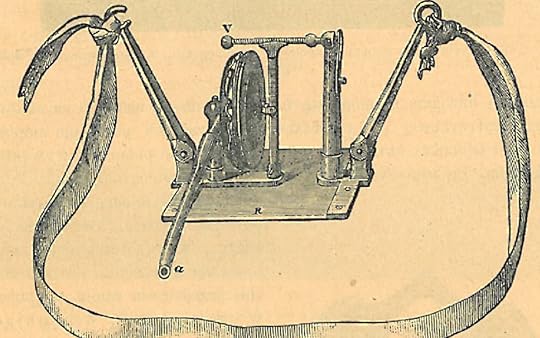
Obviously, early 20th century science was not as sophisticated as what we have today. A lot of different people entered fields of study without necessarily having direct or even indirect credentials.
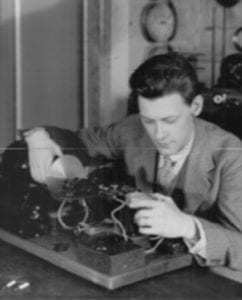
It is thought, for example, that Rune Elmqvist, inventor of the first pacemaker, may have contributed an early electronically activated writing machine to initial experiments.
It is not that he shouldn’t have, but when you see so many people with so many devices studying phenomena like this, here’s a suggestion. Start thinking “Wild West of Knowledge.” That will be more effective than expecting anything like clear and focused scientific analysis from this historical period.
Indeed, when the first serious publication finally arises in 1960, Ake Edelfelt completely dismisses subvocalizing as a problem:
“Silent speech is universal during silent reading; efforts to eliminate it should be discontinued.”
Jump ahead to the present day and nothing amongst serious scientists has changed. According to research compiled by Scott Young, if you want to read well, you need to subvocalize.
How To Stop Subvocalizing: Seven Weird, Unproven Tips That Probably Won’t Work
The first thing you need to understand is that it’s more than fraudulent to claim that subvocalization should be stopped. It’s contradicted by almost every speed reading program and book I’ve seen.
For example, in a course called “Kwik Reading” by Jim Kwik, you are given ways to reduce subvocalization.
A few videos later, you are told to ask questions while reading.
Well… which is it? Hear your inner voice or don’t hear your inner voice? How are you supposed to ask questions mentally if you’re trying to be silent?
The lack of clarity and the utterly impossible to ignore contradiction in terms should instantly remind you of Ake Edelfelt’s finding: stop trying to do this.
To persist in forcing yourself to be silence is nonsense. In fact, my research has yet to show exactly how something as normal and natural as subvocalizing came to be called a “habit.” It’s even less clear how the speed reading crowd started heaping so many negative connotations on your natural reading voice.
But wait. There’s more, because the advice only gets worse. For example:
One: Keep Reading

A lot of speed reading training books and programs tell you to stop “backreading” or “regressing.”
This “tactic” is utter nonsense for many reasons.
For example, have you ever read Nietzsche? He causes you to reread things he’s said frequently.
Have a look at this passage from The Gay Science:
Owing to three Errors . Science has been furthered during recent centuries, partly because it was hoped that God’s goodness and wisdom would be best understood therewith and thereby – the principal motive in the soul of great Englishmen (like Newton); partly because the absolute utility of knowledge was believed in, and especially the most intimate connection of morality, knowledge, and happiness – the principal motive in the soul of great Frenchmen (like Voltaire); and partly because it was thought that in science there was something unselfish, harmless, self-sufficing, lovable, and truly innocent to be had, in which the evil human impulses did not at all participate – the principal motive in the soul of Spinoza, who felt himself divine, as a knowing being: – it is consequently owing to three errors that science has been furthered.
Nietzsche says he’s going to talk about three errors at the beginning of the passage. He then doesn’t use the word “error” again until the last sentence. To understand what the errors are, you literally have to go back and reread the passage.
Different ways of referring back to points within entire books or even individual paragraphs is a strategy that good writers use all the time. It’s like a P.S. inside of prose, or a callback to a salient point mentioned earlier in the text. If an author says, “As I mentioned back in chapter one,” there is zero reason why you would not go back to reread the passage if you can’t remember it.

Sure, you might “read” faster by not going back to refresh points an author reiterates, but you’re not guaranteed to understand more just by plowing forward. If anything, your path to meaningful comprehension will be slowed, if not destroyed.
Pro tip: Although I strongly disagree that you should avoid “regressing” backwards by rereading information (in fact, one of my most popular posts teaches a rereading strategy), there is a subtle point to be drawn here.
When you can’t understand something and repeating an idea isn’t making it any clearer, moving forward can be helpful. There are many difficult topics I’ve read where I needed to not only keep reading, but also read outside of the text by using supplement guides and other resources.
I also needed to memorize information I did not understand, which is one of the three corrections I made when correcting these three pieces of bad advice memory experts tend to give.
Two: Use Your Finger Or A Pointer
If running a finger, pencil, chopstick or broken antenna from a transistor radio helps you read better, that’s great. You’ll get no argument from me.
But I think you deserve to know the origin of this tactic, which may have hypnotized people around the world into thinking it has an effect it might not.

According to Marcia Biederman in Scan Artist: How Evelyn Wood Convinced the World That Speed-Reading Worked, the origin story of this technique is beyond belief.
Here’s how it goes:
Once upon a time, Evelyn Wood dropped a book. As it was flying through the air, she reached to grab it and noticed she could read a sentence faster as her finger paced beneath it.
Let me ask you this:
How do you read a moving sentence on a small object like a book, even with a finger between your eyes and, say 21 words, flying through the air?
The answer is that this story sounds like nonsense.
Again, I’m not saying that some kind of aid can’t help.
But before you invest a ton of time in it, consider how these tactics come into being in the first place. You could save yourself a lot of time and energy as you use the rule strategies needed for reading faster.
Pro Tip: The rare time I can’t focus, I will use a blank index card to cover up parts of the page I’m not reading. I find this approach useful because it removes the stimulation of all the other words.
It also does it in a way that doesn’t add a meaty finger between my eyes and the text. You can move the index card slowly down without even having your fingers appear near the page.
Three: Count From 10 to 1 While Reading
Counting while reading is another tip from Jim Kwik.
Huh? Vocalize one type of content in the hopes that it will blot out another? I’m not sure how this makes sense.
However, there is a technique related to this that is worth using in the context of meditation. It appears in Gary Weber’s Happiness Beyond Thought.
This techniques stems from the Zen tradition.
To perform the exercise, count from one to ten and try to suppress the even numbers. It’s kind of like playing a game of, “Don’t think of a red cat,” but I’ve found that I actually can do it (even though it took over a year of trying).
Has this exercise helped me concentrate more while reading while also picking up speed and comprehending more?
Yes, but that’s because many meditative activities have been shown to improve memory and concentration for reading. That’s why I practice this technique while meditating, not while reading.
Four: Listen To Music While Reading
Some people can listen to music while reading. When I was younger, I was able to do it all the time. I used to write a lot while listening to music (and sometimes still do).

However, I don’t see how doing this can help reduce your inner voice. This article provides no research to back up the claim and says that “Classical usually music works best.”
Really? Which Classical music? What does “usually” mean?
I don’t know about you, but when I listen to Bach and Beethoven, those masters grab my ears by the throat and don’t let go.
Good music commands our attention, so although I know from personal experience that it’s not impossible, these dubious claims with zero substantial research evidence or even anecdotes make no sense. They only raise questions.
Five: Force Yourself To Read Faster Than Normal
Although there is merit in pushing ourselves for better performance, there’s a potentially huge problem in this suggestion.
For one thing, if you’re pushing yourself to read faster how are you doing it?
Chances are… you’re doing it in thoughts. And that means you’re almost certainly “subvocalizing.”
Plus, speed reading books and courses always advocate defining your “normal” reading speed. They talk about spending a lot of time testing how fast you’re reading and recording the numbers.
I find this practice odd for a few reasons:
As with the command to read faster, you’re creating mental content that almost certainly places a filter or lens between you and the content you should be focused on.
Being aware of having a timer on and needing to count words also creates more mental content to think about (and vocalize while reading).
How many people are actually skilled enough with the numeracy needed to:
Create and gather accurate data?
Analyze the data they produce accurately?
Reasonably and reliably crossindex the speed data against the behaviors of their throats while reading?

By all means, experiment with placing such filters on the reading experience.
As John Graham has shared, adding “obstructions” during memory training helped him win the 2018 USA Memory Competition. But keep in mind that those training efforts were directed at a competition outcome, and there is nothing in particular any memory competitor needs to understand.
When it comes to speed reading competitions, where timing is definitely an issue, I couldn’t find any sample questions to get a sense of how in-depth the comprehension questions go.
That would be interesting to know, as would the specific criteria that apparently satisfied a “group of [unnamed] reporters” that Anne Jones read the final Harry Potter novel in 47 minutes.
I’m seriously suspicious of the intellectual credibility of the questions she was asked, especially when her summary of a novel that was not read in anything like test conditions is that it was “very, very interesting.”

Again, even if we had access to the standard used to question Jones’ comprehension, the larger point is this:
Competition and speed reading demonstration outcomes do not necessarily reflect anything related to the reading comprehension strategies that actually help people get ahead in their lives.
It’s also easy to fake knowledge of fiction, especially pop culture fare, because they are grounded upon well-known principles of narratology, such as the hero’s journey archetype. I’d love to see someone read Naked Lunch by William S. Burroughs in the same period of time. That book too is something anyone could call “very, very interesting.”
Six: Train Your Eyes
I’m not sure how running an infinity sign in front of your eyes with your finger is supposed to stop you from reading in your head.
 It’s also not clear how any number of arm movements are supposed to help in this regard, though many speed reading books and courses insert what appears to be elements from Qigong and so-called Emotional Freedom Techniques (EFT) like “tapping.”
It’s also not clear how any number of arm movements are supposed to help in this regard, though many speed reading books and courses insert what appears to be elements from Qigong and so-called Emotional Freedom Techniques (EFT) like “tapping.”
Personally, running my eyes around in circles only gives me a headache. I highly recommend you check with a doctor first before engaging in any eye movement exercises. And take other body movement instructions with a grain of salt. There’s no doubt some physical movement can help you read better, but what it has to do with learning how to read without subvocalizing remains a mystery.
Seven: Train with Software
The Internet is awash with software programs purporting to help with different speed reading skills. Most of these softwares show you one word at a time, kind of like certain movie previews flash words on the screen for dramatic effect.
I’m not sure how being shown individual words is going to help, but clearly part of the idea is that you will experience the words so quickly, you won’t have time to sound out the words. I’m not sure if it’s true, but when looking at these softwares, I quickly feel nauseous.
 To be fair, I once submitted myself to reading an entire chapter of a Dostoevsky novel using one of these software programs. Sure, it does feel like you’re following along.
To be fair, I once submitted myself to reading an entire chapter of a Dostoevsky novel using one of these software programs. Sure, it does feel like you’re following along.
But there’s a catch. I can’t remember which novel it was, I don’t remember anything about the chapter, and who knows… maybe it wasn’t even by Dostoevsky.
Worse, the reading experience was far from pleasurable. In fact, the experience was downright painful, and the only time I ever looked at such software again was while preparing this article.
The Real Way To Stop Subvocalizing
I’ve gone through many tough times due to bipolar disorder. During university, my mind sometimes got so loud during episodes where I could not afford to stop studying that I frequently went to the hospital for help.
Do you want to know what helped?
Increasing the sounds of words, not decreasing them.
Back then, books on tape were still quite rare, and even rarer on CD. But whenever possible, I got them and would listen to the books narrated by professional actors while following along with the text in hand.
And listening to the incomparable George Guidall narrate Dostoevsky’s Crime and Punishment is not something I think I’ll ever forget.

When I couldn’t find a book on tape or CD, which was often the case with the dense philosophy I needed to cover… I narrated the books myself. I often used a micro-cassette recorder so I could review the material at 2x speed. It made me sound like Mickey Mouse, but that was okay because it let me use a powerful technique for memorizing textbooks.
When you’re immersed in the reading experience, you know exactly how to eliminate subvocalization. You do it by merging with the text and loving the reading experience, something that can require a bit of mental strength if you don’t know how to deal with boring topics.
Frankly, I can say that I never read in my head. I always strive to “fuse” with the author so I can assemble with their ideas and share as much as possible of their realm of human consciousness.
What Reading In Your Head Really Means
Because here’s the truth:
Humans never read in their own heads.
No individual owns language. And each brain is an information storage and retrieval “device” that relies on trafficking in words that are shared.

Words aren’t really all that important at the end of the day. It’s the ideas words point to that matters. And when the hucksters get away with shilling their garbage about “subvocalization,” it’s because they’re preying on the pain some people feel when they are locked out of the conversation.
So if you want to be included in great conversations, your best bet is to:
Increase your vocabulary
Create detailed study missions
Read more good books, much more often
And to help you with learning more vocabulary so you can read faster as the path to remembering more, make sure you grab my free memory improvement kit. It will give you access to the universal Memory Palace technique every single person can and should learn.
Until next time, never forget:
We read to interact with the “voices” of others. Vocalize or do whatever you need to do to get at the meaning contained by the words and you cannot help but read better and faster.
December 19, 2020
9 Critical Thinking Strategies That Lifelong Learners Need To Know
 If you’re looking for critical thinking strategies to help yourself or others, congratulations.
If you’re looking for critical thinking strategies to help yourself or others, congratulations.
Learning to think better is one of the best ways to help ourselves improve the world.
And now that you’re here, I’m going to treat you to an epic lesson in critical thinking techniques that can:
Improve your performance at school or work
Help you make better decisions
Assist in avoiding mistakes that crush others
Improve profits as an entrepreneur
Using creative thinking and critical processes of understanding that improve your memory
This final benefit is especially important if you find yourself forgetting information. And on this page you’ll even learn more about how to remember the steps involved in thinking more critically.
A Brief History Of Critical Thinking Strategies
Every culture has developed tools for thinking better. Let’s list just a few classic examples:
Asia: Tao Te Ching and The Art of War
India: Panchadasi and the Advaita Vedanta tradition
Greek: Plato and the Socratic Method
Russia: Triz
Britain: Analytic philosophy
France and Germany: Continental philosophy and Nietzsche’s “genealogy”
Spain, Italy, and other parts of Europe: Llullism and techniques like ars combinatoria
This final tradition is particularly interesting because it was key to the development of formal logic and ideas that eventually made modern computing possible.

Critical thinking is always evolving and some of the newest applications are involved in everything from new political initiatives to quantum computing and innovations in space travel.
9 Types Of Critical Thinking That Help Lifelong Learners Outperform Their Competition
Let’s face it. The reason we learn critical thinking is not just so we can improve the world. It’s so we can compete in the race to improve the world.

That means that critical thinking cannot stand on its own. It has to also include analytical thinking and creative thinking.
That’s why we have to go beyond the typical stuff you read online about asking:
Who
What
Where
When
Why
How
Don’t get me wrong. Those are important questions to ask. But let’s dive in and understand four of the biggest and best categories of critical thinking:
1. First Principles Thinking
This kind of thinking breaks a problem down to its basic parts and uses them to explore new paths. It tends to keep a goal in mind at each step.

To use this kind of thinking, you also want to:
Identify core assumptions
Break the problem down into parts
Create new processes towards a clearly defined goal
Example: We know that memory requires at least some level of repetition. But how can we reduce that amount?
Looking at our core assumptions, we can break the problem down into parts and notice that primacy and recency effect allow us to create a tool.
The new process is the Memory Palace technique, something that every memory competitor and many students use and refine year after year, usually by repeating this same critical thinking strategy.
2. Blank Slate Thinking
This technique starts with first principles, but you go further. You ask: What would this look like completely from scratch?

Example: Imagine you’re trying to solve poverty in an inner city. Even though it won’t be possible to start the city over, by thinking about what the area looked like before it was inhabited, you can imagine a new history and try to figure out how greater fairness might have been achieved.
3. Synergistic Thinking
Synergy is about combining things together that don’t normally go together.
As a way of stimulating more critical thinking, you would get a bunch of items together and keep asking, Why don’t these items go together? Then dream up ways they could be combined as a critical thinking exercise.
Example: Imagine scissors and a banana or a kite and vase. Ask: Why don’t these items go together?

Your answers might be something like, because bananas don’t need to be cut and vases don’t need to fly. Try to come up with at least 5 reasons why the items you’ve paired don’t go together.
Then try to come up with at least 5 ways they could. Even if the solutions you come up with are silly, they will exercise your mind. For example, maybe banana skins can oil rusty scissors or kites could deliver flowers to people in hospitals where the elevators are broken.
4. Adaptation
A lot of innovations come from people transferring a feature from one area to another.
Example: Book of the month club business models have become everything from vinyl record clubs to monthly underwear subscriptions.

Another way to think about adaptation as a critical thinking strategy is ars combinatoria.
This ancient technique let you adapt a Memory Wheel based on “contracting” larger ideas down into individual letters.
Then, if you had a problem you needed to solve, you would expand the letters and adapt the ideas within them. It’s hard to explain, so here’s a video that describes the technique in-depth:
https://www.youtube.com/watch?v=0cYDm...
5. Magnification and Minimization
We often get stuck in our thinking because we’re looking at things in their actual scale. But when we change their size and dimension, we can gain new insights.
Example: If you’re trying to solve a problem involving thousands of people, scale down to thinking about how to solve it for just ten people, or even one.
Or, if you’ve having a hard time imagining something small like the operations of a biological cell, draw it as big as possible so you can zoom in on individual parts with greater ease.
6. Reverse or Invert
Have you ever wondered why magicians disappear in a puff of smoke instead of appearing in them? Or what about donut holes? Where do they go?

Take problems and play them in reverse in your mind.
Example: In the hard problem of consciousness, experiences like headaches are said to be impossible to measure. (This is because pain is typically based on perception.)
To invert the problem, you might consider pleasure and how smiling is inherently visible. To reverse it, you might imagine tears flowing back into your eyes and try to trace them back to where in your brain the process of crying begins.
7. Assume Different Points of View
We often make the mistake of seeing problems only through our own eyes. But it’s very useful to try to “walk a mile in someone else’s shoes” whenever you can.

Example: Some criminals have broken into your local grocery store and broken all the windows. This obviously raises safety issues and the criminals should be punished. But can you spend 5-10 minutes thinking through the life situations that may have led these people to act criminally in this way? Did they have as much free will in it as you assume?
Next, think through the perspective of the store manager. Think through the experiences of one or two of the employees. Then think through the perspective of some of your neighbors.
Apply this kind of critical thinking strategy to many situations and you will gain a much greater perspective on human life and reality.
8. Mastermind Thinking
I never met Einstein, and chances are, neither did you. But that doesn’t mean you can’t imagine having a conversation with him.

You can also have imaginary conversations with Steve Jobs, Buddha and Joan of Arc. Although these won’t necessarily be accurate, the more you know about these people, the more you can ask, What would Jimi Hendrix do and get a reasonable answer.
Example: Let’s say you want to 10x your revenue over the next two years. You can read the biographies of 3-5 entrepreneurs who have been successful in your field and then mentally assemble them for a council meeting in your mind. Ask them what they would do and let your understanding of their accomplishments guide your answers.
9. Last Principles Thinking
Science Fiction is very good at asking, “What’s next?”

Example: In SevenEves, Niel Stephenson imagines the moon blowing up and ultimately wiping out all life on planet earth. The entire novel answers the question: what’s next?
To use this in your thinking, ask “If this situation is true, what happens next?”
Although it’s usually impossible to know, by running the thought process, you will be practicing one of the finest strategies for critical thinking we’ve got. You don’t even have to avoid reductio ad absurdum issues, so long as you work to come up with several solutions.
How To Make Critical Thinking A Daily Habit
You might have just read the strategies above and be thinking, “That’s all fine and dandy. I can see why these critical thinking examples are so useful. But how am I supposed to remember how to use them?”
Here are some ideas:
Use A Memory Palace
This technique can help you readily memorize everything we’ve just discussed. Here’s how:
Keep A Journal
If memorizing critical thinking strategies isn’t right for you, you can always copy them into the first page of a journal. Then, when you need to solve a problem, you can write out your responses to each thinking process.
Read About Decision Makers
Chances are that if there’s a biography about a successful person, they’ve been successful at critical thinking. Whether it’s an actor, entrepreneur, lawyer or president, success leaves clues and advanced thinking skills will be involved in every extraordinary achievement.
Discuss Often
A lot of people don’t think critically with any level of skill because they don’t engage in enough conversation.
Is it strictly necessary? What if you’re an introvert?
Those are good questions, but I’d use critical thinking itself to flip things around a bit. I would ask instead:
What happens if I continue the way I’m going without enough conversation with others?
Anytime you hit a stumbling block, such as an idea or belief about yourself that would prevent you from getting a benefit, it’s more valuable to ask about the price you’ll pay by not voluntarily embracing an obvious solution.

In sum, discussion works and everyone who wants to be a better thinker should engage in as many of them as possible, with as many people as possible.
I’ve found that Lunchclub is a great tool for meeting a large variety of people who come from all kinds of different perspectives.
By speaking with others, you’re also placing yourself in creative and supportive environments that lead to even more ideas worth having.
Read Books Regularly To Stimulate Critical Thought
There are many big ideas and lessons that you’ll never encounter if you keep your head stuck in the sand of your own interests and preferred entertainment.
For example, I find economics pretty boring. But by being willing to stretch, I’ve learned a ton, experienced many surprise insights and wound up using many directly useful ideas that improved my life.

Go through these books that normally wouldn’t attract you slowly and with as much interest as you can muster. And if you need help, my article on dealing with boring topics is a must.
A Bonus Critical Thinking Strategy Everyone Can Use
So, what do you say? Can you imagine yourself using any of these critical thinking strategies?
Or perhaps I should ask, What do you imagine the consequences will be if you don’t?
Whether you’re using these approaches yourself or teaching them to someone else, here’s one last suggestion.
Whenever you’re looking at a problem, new or old, ask yourself:
What’s the real problem that needs solving?
Far too often, people work on coming up with solutions for the wrong problem. Everything you’ve learned today should help in avoiding that sad outcome, but I just wanted to throw it in as a bonus. Just in case.
And get this: It was thinking critically about this article using the very tools on this page helped me realize it needed to be here. (Last principles thinking)
Cool how it all works, isn’t it?
December 17, 2020
How To Read Faster: 16 Proven Tips From A Thorough Reader
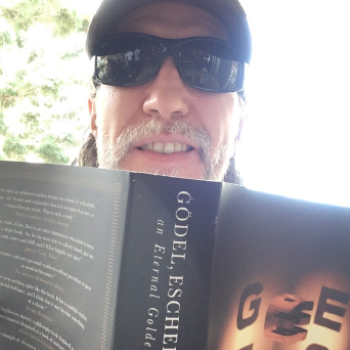 If you want to know how to read faster, you’ve probably tried to stop “subvocalizing” and reduce “backskipping.”
If you want to know how to read faster, you’ve probably tried to stop “subvocalizing” and reduce “backskipping.”
What if I told you such “speed reading” techniques are probably a waste of time for most serious learners who have big goals for their lives?
There are at least three reasons why speed reading won’t help a lot of people. These are:
A limited vocabulary
A limited understanding of the field
A lack of reading strategy
Even if techniques like controlling your eyes better and silencing your inner voice helped you, so what? If you don’t know what even a small percentage of words mean and lack familiarity with the topic area, you’re not going to understand any faster. In such cases, you’d do better reading slowly, looking up words and terms, and interrupting your flow to aid understanding by reading outside of the main text.
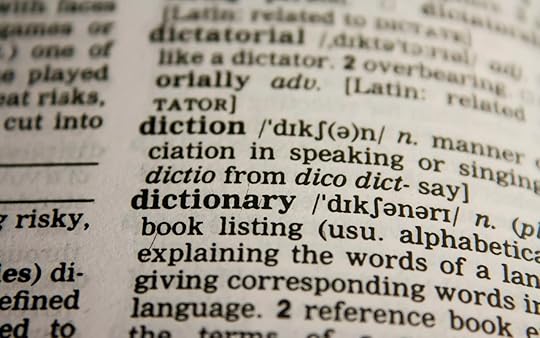 So let’s reframe the question:
So let’s reframe the question:
If you’re learning to read faster, what are the fundamental speed reading techniques that will help you zip through multiple books in a single day?
As someone who blazes through multiple books all the time, reading intelligently and applying speed in ways that make sense is something I can help you achieve.
And the best part is I can help you read quickly without giving yourself the headaches most speed reading courses induce, so let’s get started.
How to Read Faster (While Remembering Everything)
The first thing to do is define “everything.”
No one actually needs or wants to remember everything. As Jill Price’s so-called photographic memory shows, doing so can make you ill.
Instead, we want to develop a number of “decision metrics” that guide us as we go.
Soon, your frustrations around your reading speed will disappear. You will safely leave behind all the instructions about recording your baseline reading speed and suppressing your inner voice, only to be told by speed reading experts that you’re supposed to make mental images and ask questions as you read.
(Seriously? How are you supposed to reduce your inner voice and increase it at the same time? Speed reading courses that teach this should offend anyone with a modicum of common sense in their system.)
So we start by thinking about goals for reading faster and remembering more. And to do that, let’s just expose the white elephant in the room:
There is no perfect way to get started. And the tips to read faster I’m about to present are not necessarily “steps” to follow in order. My hope is that you’ll rethink what reading is, and what reading can be.
How to Read Faster and Comprehend More
Tip #1: Set goals with deadlines within a reading plan
If you want to read faster, you have to practice reading more often.
And the best way I know of to do that is by creating a reading plan for yourself. That way you can develop topic mastery based on a combination of vocabulary, specific terminology, history and the perspectives of the main players in the field.
For example, when I was researching my book, The Victorious Mind, I created a 90-day reading plan. That way, when using all the techniques you’ll discover on this page, I was reading in a direction that was leading me to a specific goal.
Creating your own reading plan takes some practice, but here are some suggestions. These are important because if you want to read faster, you need to develop familiarity with the topic.
Find the definitive textbook or most famous book on the topic. For example, when I started a reading project on consciousness, I quickly found out that Gödel, Escher, Bach is a key text in the field.
Find 2-3 articles about the book and read these. Go beyond the Wikipedia page.
Find 2-3 videos.
Find 2-3 podcasts.
Use my how to memorize a textbook strategy as you read to cull out the information you want to remember
Follow-up with 2-3 of the books mentioned in the definitive textbook
(In massive tomes like Gödel, Escher, Bach you’ll discover endless reading suggestions, so setting a limit is really important!)
How will adding more material to one you read faster?
My friend and fellow memory expert Jonathan Levi calls this tactic, “brute force learning.” The answer behind why it help is simple:
When you start with the fundamentals and develop knowledge of the field, you’ll give yourself the most important reading skill in the world: pattern recognition.
In setting reading goals like this, you’re learning what it means to know your field. The more you know, the more you can know, and that will naturally help your brain:
Recognize big and important ideas faster
Connect them to fundamentals in instantly memorable ways
Using multiple mediums like video and audio tap into more representations of your brain and add more perspectives from others who have read the book
Note: I personally expect every beginning to be “front loaded” with more effort and only after some “pattern recognition” has been developed do I expect to read and understand faster. However, we want to make sure we don’t fall into collector’s fallacy, which is why when I say 2-3 other resources, I really mean 2-3.
To develop this level of recognition as quickly as possible, let’s look at the next powerful strategy.
Tip #2: The U.S.S.R. Technique
It would be nice if life were simple enough that we can always read at the same time and the same place – just like in school.
In fact, with a bit of planning, we can. And it’s one of the most important strategies for reading faster that I know. This is thanks to the power of rhythm and flow.
U.S.S.R. stands for Uninterrupted, Sustained, Silent Reading.
Instead of doing eye training exercises to expand your peripheral vision, protect your environment from visual interruptions. Read in a quiet place with little or no foot traffic. Put borders around your time.
And if you have family or roommates with schedules that interfere with your own, take responsibility and communicate with them about your needs. It would be nice if other people would remember and respect your schedule and goals, but it’s unrealistic to hold them to that standard. Be firm and protect both your time and space.
Tip #3: Learn to relax
A lot of people are so stressed out about not reading quickly enough that they tense their bodies. This lack of physical ease puts their posture out of whack, impedes breathing and makes being alive generally uncomfortable. When learning how to read a book fast, you need to be in an optimal physical position.
Rather than give a cookie-cutter, one-size-fits-all approach (that doesn’t exist), experiment. You may need to sit in different ways depending on the topic matter.
Meditation is also a key strategy for developing relaxation on demand. These 12 concentration meditations should help you out.
Tip #4: Do Not Avoid Reviewing
I’ve never understood the emphasis on eliminating “back skipping” or “regression” you see in the speed reading community. This strikes me as precisely the way to make sure you forget information.
Instead, I suggest reviewing frequently and strategically. For example, I like to hold my finger in the page where the chapter started and go back to it several times. This technique is kind of like inner-book interleaving, which we’ll talk about more later.
(It is not really possible to reproduce this technique when reading digitally, though some software programs allow for multiple bookmarks that make this easier. If the document is numbered and you have a Major System, memorizing page numbers can help with this as well.)
But the main point is that I don’t stress if my mind wanders or I need to go back. Reviewing is a way to keep focus, maintain connection with the book and actively connect the dots while reading.
I’m biased, but I also find that physical books are better for avoiding mind wandering and you get other benefits, as I’ve described in detail here:
https://www.youtube.com/watch?v=er-k8...
Tip #5: Do Not Wreck Your Eyes Based On Bad Science
A lot of speed reading books ask you to follow a pen in an infinity symbol. Or they might ask you to draw dots on your pages to impose three columns, the idea being that if you only perform three eye fixations on each line you’ll read faster.
Scott Young has deeply questioned the research on eye training and reducing subvocalization. Frankly, I think he could have gone a lot further. So many of the claims are based on self reporting by people who probably don’t know enough about testing themselves for us to believe they are being accurate.
What about using a pointer?
Maybe, but think about the bizarre origin story for this technique:
Evelyn Wood says she discovered it when a book fell off a desk and flew past her. As she tried to catch it, she noticed her finger running along a sentence. For more details, read Scan Artist: How Evelyn Wood Convinced the World That Speed Reading Worked, by Marcia Biederman.
I don’t know about you, but I doubt I could ready anything from a book in motion, let alone have my finger help with the process. This puzzling origin story only gets weirder when you look into fraudulent claims involving JFK himself as perhaps the most famous person to fall for such speed reading fallacies.
We can go deeper:
Why would you put something between yourself and the information, either your finger, pencil or a chopstick. (Yes, I’ve encountered a course that suggested carrying around a chopstick.)
This strategy sounds like the opposite of how you would want to train your eyes – which would be unassisted and definitely unobstructed. Plus, how are you supposed to use a pointer on mobile, when your finger would constantly be clicking links and opening new pages?
As you can see, some of the speed reading teaching out there falls apart quickly when held to scrutiny.
Tip #6: Consider Interleaving
I’ve already mentioned picking a main, authoritative textbook on a topic and reading a few additional articles. Essentially, you’re giving your brain a break as you weave between different voices and this encourages what is called “diffuse thinking.”
It also helps you break up time spent on a dense book with lighter versions of the same information. However, you can also get the benefits of diffuse thinking by reading a few other topics at the same time.
For example, when I go to the library, I purposely “distract” myself by grabbing a few books from other topics that interest me. I’ll get a novel and a few books from completely random categories.
This strategy helps make it easier to take interesting breaks and set little mini-goals.
For example, let’s say you grab one book you need to read and three unrelated books. You can then create a little if-this-then-that reading circuit:
Finish one chapter then…
Peruse an interesting book, then…
Finish another chapter, then…
Pick up the next book… etc.
Don’t underestimate the power of giving yourself a shorter reading goal and then allowing your mind to wander. It’s well-documented that it helps us understand and remember more.
Tip #7: Don’t Force “Understanding”
When it comes to reading comprehension strategies, force isn’t one of them.
In reality, we read precisely because we don’t understand and should acknowledge that we will always not know what we don’t know.
In some ways, understanding is always incomplete, and one of the points of Gödel, Escher, Bach is to illustrate this as a normal and healthy part of human consciousness.
If you don’t understand, make a note of it. You can also use a modified version of the Feynman technique to help coax yourself along.
Typically, the Feynman technique involves describing a topic in writing as if you were teaching it to a child. Then, when you come across blanks in your knowledge, you fill in the gaps with re-reading or reading outside the core textbook. It is powerful and yet another reason while subvocalization is probably not a great strategy. You want to use the power of asking such questions and teaching yourself while you read.
In all things, be humble enough to realize that your fullest possible understanding is always yet to come. It’s a process forever held in beta, and that is a very exciting thing when you stop to think about it.
Tip #8: Vocalize to get over stumbling blocks
Not to overdo my criticism of subvocalization. I actually think there is a context in which it makes sense.
However, when it comes to reading faster, one of the quickest ways to overcome a hurdle is to read something you don’t understand aloud.
Even the best authors are capable of writing unclear sentences. Heck, they can even produce garbled paragraphs, pages and even entire books.
When you can’t understand, there is no shame in reading out loud. In fact, I’ve had times when my concentration was so shot, I recorded myself and listened back to the material to aid in understanding it. If you want to know how to read faster and comprehend from someone who has hit rock bottom and still wound up getting a PhD, that is exactly how I did it.
Tip #9: Priming and Picture Walking
Priming is the best thing from the world of speed reading in my opinion. There are different ways to do it, and here is the general pattern I use, followed by a discussion:
Read the front and back cover first, including all verbs
Scan the index and bibliography
Read the conclusion
Read the colophon page
Read the table of contents
Skim through the book looking for illustrations, charts and tables
Read the introduction
Read the most interesting chapters
Read the entire book (where relevant)
When we talked earlier about expanding the field, I meant in terms of an entire topic. But we can do this in terms of an individual book as well.
Reading the covers and all of the “paratexts” like the colophon page, index and bibliography is great for “dropping seeds in the field” of your memory. It’s like looking at a map and pinning little flags of recognition. You are literally training your brain that there is already familiar territory here. 
For example, whenever I look through a book and see a name like Giordano Bruno or Friedrich Nietzsche in the text, I recognize that this new book includes content “wormholes.” Recently, I quickly read Daniel Dennet’s Breaking the Spell, and quickly assessed the many ways he makes use of Nietzsche in that book.
It’s not that this strategy necessarily leads to any specific outcome. It just creates context and wakes up parts of your existing memory and competence in the field. It also generates curiosity. When you’re curious, you’re probably having fun, so this aspect of priming is basically like watching a movie trailer to whet your appetite.
When it comes to reading the book out of order, I read the conclusion first primarily to find out if the author actually arrived at a conclusion worth pursuing. Combined with the introduction, these two parts of the book usually mention in which chapters evidence has been given to support certain arguments, and this helps you decide where you need to focus.
Finally, if it seems clear that the book is worth reading, I’ll dive in and use the next strategy.
Tip #10: Cull the information you want to memorize first, use the Memory Palace technique later
A lot of speed reading courses talk about making associations as you read.
I do this myself sometimes. But I never do it when I want to understand and remember a large amount of the book quickly.
This is because I find it’s better to read strategically and limit the amount of interruptions. I do not think interruptions to take notes are bad. But too many gets us into collector’s fallacy, which is why I limit myself to between 3-10 points per chapter.
I’ve been sharing this technique for years and a lot of people think it won’t be enough information. The reality is that if you can memorize the big ideas, a lot of the granular details will tend to fall into place anyway. This is because wherever content is king, context is god. The details typically fill themselves in.
Strategically, when using the Memory Palace technique, you can add more details later, but you’ll have nothing to add those details too if you don’t just get started. In brief, I extract the points to index cards, and this is because they are moveable.
Then, when I have the main points I want to memorize, I place them in a Memory Palace purposely chosen for the content in that book. There may be several Memory Palaces for the book, or some of the information may be connected to other existing memories with or without Memory Palaces.
The point is simply that reading and note taking is divided from the process of memorizing and reviewing. This makes everything clear, crisp and focused. I find the same approach makes sense when learning to become fluent in a language as well.
Tip #11: Write Summaries
When Dr. Anderson told me she wanted summaries from each book I read during my last semester of courses during grad school, I swallowed hard. That’s because there were dozens of books on my reading list.
However, I’m grateful she made this assignment a requirement because I’ve been writing summaries ever since. It’s great for learning faster because it taps into the levels of processing effect by causing you to actively recall the information in your own words.
I’ve found that 250-500 words is more than enough to capture a book’s core thesis and its main points.
Tip #12: Discuss (With Anyone or Anything)
It’s important to verbalize what you’re learning. If you can’t join a group on the Internet for live stream discussions, I suggest:
Scheduling a reading discussion with family
Self talk while walking or at the gym
Talking with pets as a last ditch effort
It’s always better if you can talk with other people, but if that’s impossible, at least talk to yourself. This activity is like the Feynman Technique, minus the writing.
You can also imagine having a discussion with the author, or even the authors of other books. As I shared in this Q&A on how to learn effectively, imaginary interviewing is a great way to speed up your path to understanding more:
https://www.youtube.com/watch?v=lOESI...
Tip #13: Expand Your Vocabulary
Brilliant Speed Reading, by Phil Chambers, seems to me one of the best books on speed reading thanks to its emphasis on vocabulary development.
By learning all about prefixes and suffixes, you rapidly reduce the amount of time you have to spend looking up words you don’t understand. Chambers’ book gets you started, and something like Word Power Made Easy by Norman Lewis is well worth your time if you want every book you read to be super clear and easy to digest.
Tip #14: Know Your Needs and Wants Using the 80/20 Rule
You’ve probably heard about the hero’s journey. It’s the structure of nearly every fairy tale and popular story in the movies and novels.
In every story, the hero has a driving ambition that comes into conflict with a psychological need.
The same thing happens in reading. You know you “want it all,” but in reality, you only need a certain amount.
Thus, as the hero in your own reading adventure, you need to accept that no one, ever, has memorized everything in a book and had all of that information be useful. It’s just not in the nature of either books or knowledge.
Rather, smart people develop the ability to zero in on the key points and identify the granular details that support those points in valid ways. There’s no best way to develop this “radar” other than to get started culling information in a manner like I’ve suggested above.
Tip #15: Be Patient with Different Writing Styles and Conventions
Authors have their quirks and some genres come backed with tedious conventions. However, there’s a reason they evolved and often, just being patient is the fastest path to mastering a text.
Again, understanding is a process, not a destination. So if you double-down on how much you’re reading, you’ll learn the different conventions of different genres much more quickly and then be able to skim more intelligently and without learning the details.
This kind of reading is especially true when it comes to legal documents and scientific papers. Many of their conventions were designed so that readers could quickly pick up the “gist” of their arguments and know almost at a glance if they relate to the research query. But without spending some time to learn those conventions, you’ll forever be locked out of knowing how to navigate them.
You can apply this same thinking to novels too.
For example, I loved Ready Player One by Ernest Cline so got a copy of Armada. I soon realized I wasn’t as much in love with Armada, so I used my knowledge of convention to skim through it. I quickly found the dilemma, the decision and action, the gathering of allies and a few other features that led me to understand the battle and resolution.
Am I going to write an A+ paper on Armada? Of course not. But I am satisfied that I got the gist of the tale and wound up enjoying it more because I used speed reading based on conventional knowledge, rather than getting impatient with it because it wasn’t as good as Ready Player One.
Tip #16: Develop Memory Systems And Practice Mnemonic Strategies
One of the coolest tools you can learn to use is a 00-99 PAO. Although I normally separate gathering information from memorizing it, when you’re reading casually and just want to memorize a few points from a book, using a number system as a kind of “Magnetic Bookmark” is a lot of fun.
In brief, the technique lets you create an image for every two digit number. If you find a salient detail on page 75, you instantly have an image for that number. You can then get that image to interact with the ideas on the page.
For example, in Maps of Meaning, Jordan Peterson talks about episodic memory and mnestic memory in the context of Shakespeare and Freud. Since 75 is John Cale in my 00-99, it was easy for me to imagine him interacting with Shakespeare and Freud in a way that helped me remember Peterson’s point about knowledge, memory and competence.
Of course, I didn’t just leave it at that. I followed up by writing a short summary of the book when I was done and that helped consolidate the memory. Now that it’s there, I understand this book much better and am able to speak about it at will.
There are hoards of memory strategies you can learn, including:
The Memory Palace
Link and story methods
Elaborative encoding
Peg Systems
Dive in and start exploring them.
3 Speed Reading Exercises That Don’t Suck
If you’re not convinced by the 15 points of strategy I laid out for you above, try some of these alternatives to the paradoxical and contradictory exercises you find in most speed reading courses.
Magnetic Eye Fixations
Instead of trying to reduce your eye movements, spend some time increasing them. Study how your eyes move. 
I’ve spent hours doing this and find it helps me concentrate. The origin of it comes from headaches I was getting in high school. My eyes always felt like I had a hard time focusing on the page. As I explained to the doctor, it was like my eyes always slipped off the page, and this annoyed me because I loved reading. As a result of this complaint, I was given glasses.
I don’t think they ever helped, but I wore them from around age 15 to age 20. While I was in university, I started getting headaches again and went to see an optometrist. She said the glasses I had were wrecking my eyes and told me the best thing to do would be to strengthen them by reading normally. She actually didn’t let me leave with the glasses I brought in because she was so worried about how they were weakening the muscles in my eyes.
So I went home and within a week my headaches were gone. At first, I noticed my eyes going back to slipping off the page, and that’s when I started to work at fixating them. To this day, if I ever feel like I can’t concentrate, I take a deep breath in and then pretend like I’m shooting Superman-like lasers at the page. Within a short while, I am focused and reading like normal.
Number-Skipping
A lot of speed reading courses suggest that to reduce subvocalization, you should count backwards while reading (or some other pattern). In reality, we know that subvocalization actually helps with understanding, so here’s what I suggest instead.
When not reading, get into your favorite meditation pose. Then count from 1-10 and back down again. If you can actually do that without your mind wandering, congrats. You’re practically a Zen Master already.
Round Two: This time, try suppressing the even numbers.
In other words, count 1, but just breathe while you should be counting 2 and try to think of nothing. Then allow yourself to count to 3.
This practice increases focus and helps you experience the nature of thought so that if your mind is wandering while you read, you can easily bring it back into focus.
3 Locations
Find three different spots to read. For example:
Park
Cafe
Bedroom
Read 10 pages in each location and make a general note of the time it takes. Pay attention to aspects like your posture, the environment and the nature of the material.
If you find yourself distracted, take a moment to either practice Number Skipping or Magnetic Fixation and see how these techniques differ in different locations.
Also study yourself at different times of day. Try reading after a cold shower. Make note of when you ate and how processes of digestion might be influencing your focus across the cycle.
This final exercise takes time, but will reward you. Know Thyself, as they say, and you will know more than anyone else ever can about how to improve your reading abilities.
How To Read Fast: A Professor’s Final Word
I’ve not only taught reading and comprehension, including critical thinking courses at universities around the world. I’ve been reading my entire life.
That is the the ultimate secret to how I’ve managed to read so much, so quickly:
I read.
I mentioned the bankrupt Evelyn Wood origin story before, but there is one part of it that makes sense. In the fuller narrative, Wood says she observed that her professor read a paper she’d written very quickly and had an intelligent conversation with her about it. This kind of report makes sense for one very specific reason I’m intimately familiar with from having gone through this experience with my own doctoral supervisor:
He was an expert in my field and had been reading materials related to my topic for decades. If he hadn’t, he would have had no business being my supervisor. It’s not that these people are “speed reading.” They’re just highly capable of scanning for the main points and connecting it to their existing knowledge.
The rest is strategy and mindset, so let me leave you with a few personal examples from my own decades of having slogged through many difficult books.
If I don’t like something I have to read, I adjust my attitude.
If I don’t understand something, I go back and pick another comprehension strategy (like reading aloud or the Feynman Technique). I go in with a stack of index cards and Memory Palaces when they are warranted and am prepared to split the information gathering from the memorizing and allow understanding to come later.
Above all, I assume that I won’t understand a new book because it is new. And as much as possible, I go in with a goal and a schedule.
I personally don’t like the term “speed reading.” I think it preys on gullibility and desperation. Yet, I know from experience and having seen friends who swear by these techniques that if you already have familiarity in a particular field, blazing fast speeds are possible.
But even then, the best readers I know are always humble. They think critically, scientifically and understand that the ability to comprehend information is a multi-layered process.
This is because language is a shared medium and it never exists in just one brain. Language is how we “hyperlink” with one another, and that’s why the real way to learn faster and remember more will always be to increase the links. If it takes a bit longer to create more connections thoroughly and well, then who would you rather be? The tortoise or the hare?









